Outdoor‐living surveys keep ranking a gable patio roof among the most-desired upgrades because its pitched form adds volume, drains effortlessly, and feels like a natural extension of the house. Home-buying data for 2025 shows patios outrank decks and porches for buyer appeal, especially when topped with shelter that blends style and smart tech. Below you’ll find 25 fresh, practical ideas — from budget DIY kits to solar-ready structures — each sized at a quick 100 words so you can skim, compare, and start sketching your dream cover today.
1. Classic Timber-Framed Gable Patio Roof
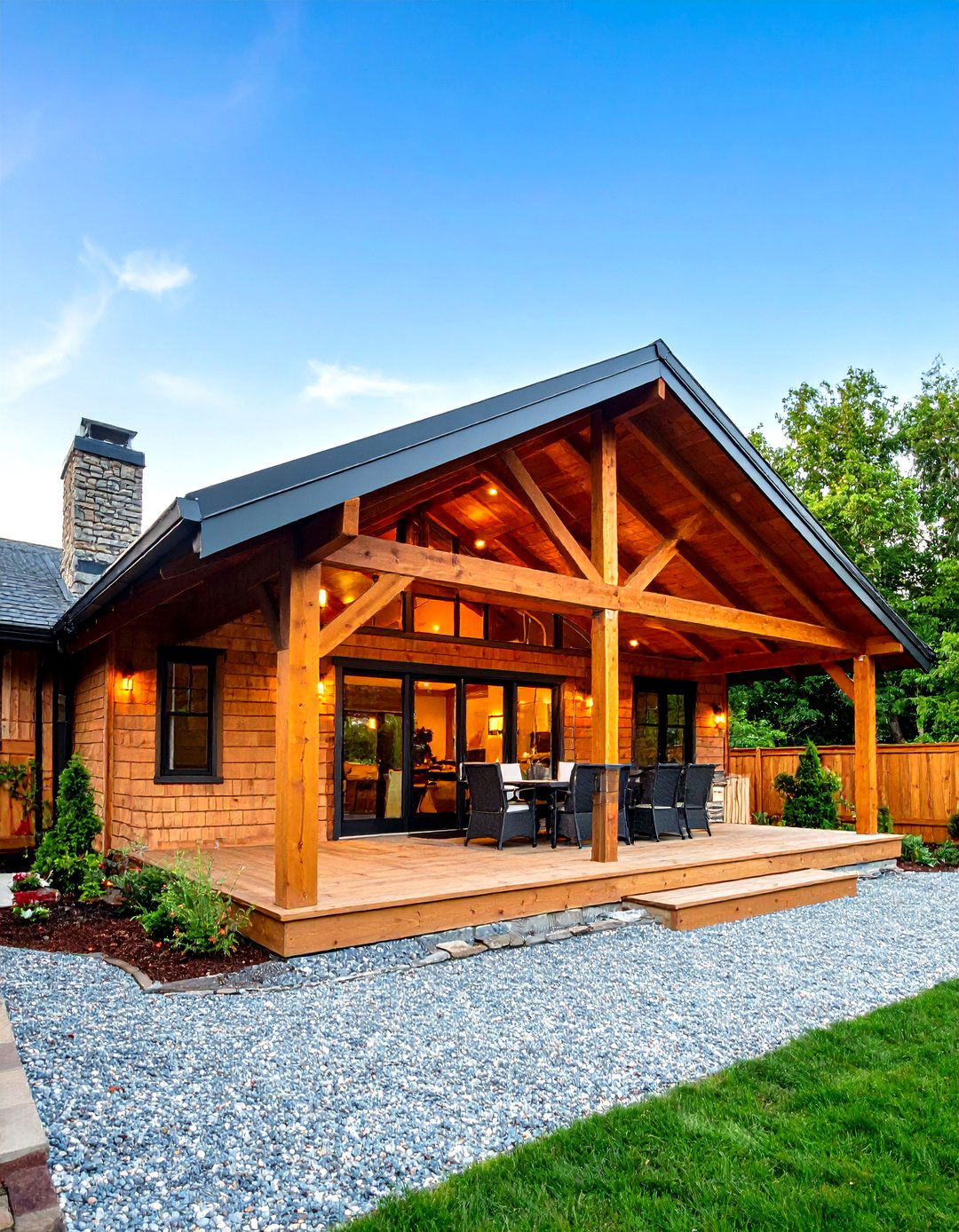
A sun-soaked Saturday feels timeless beneath a classic timber-framed gable patio roof. Begin with kiln-dried hardwood or appearance-grade cedar beams; their heft creates a cathedral effect while resisting warping. Fit tongue-and-groove pine between rafters for a warm ceiling that visually echoes interior floors, then seal with an oil-based stain to fight UV fade. Because gable peaks vent hot air, ceiling fans stay optional yet welcome in humid zones. Finish with architectural asphalt shingles that match the main roofline — home-sale studies show cohesive cladding lifts perceived value more than color accents alone.
2. Modern Steel Gable Patio Roof with Slim Profiles

For minimalist curb appeal, swap bulky lumber for boxed-in galvanised steel rafters on your gable patio roof. High-tensile steel spans farther than wood, letting you use fewer posts for an airy, almost frameless look. Powder-coat the frame matte black or charcoal to echo contemporary window trim, then top it with standing-seam metal panels; concealed clips allow thermal movement and keep screws hidden. The low-maintenance combo promises 40-plus years before recoating and shrugs off fire embers — an insurance discount in many regions. Add LED strip lighting along the ridge beam for evening drama with minimal glare.
3. Polycarbonate-Clad Gable Roof for Light-Filled Patios
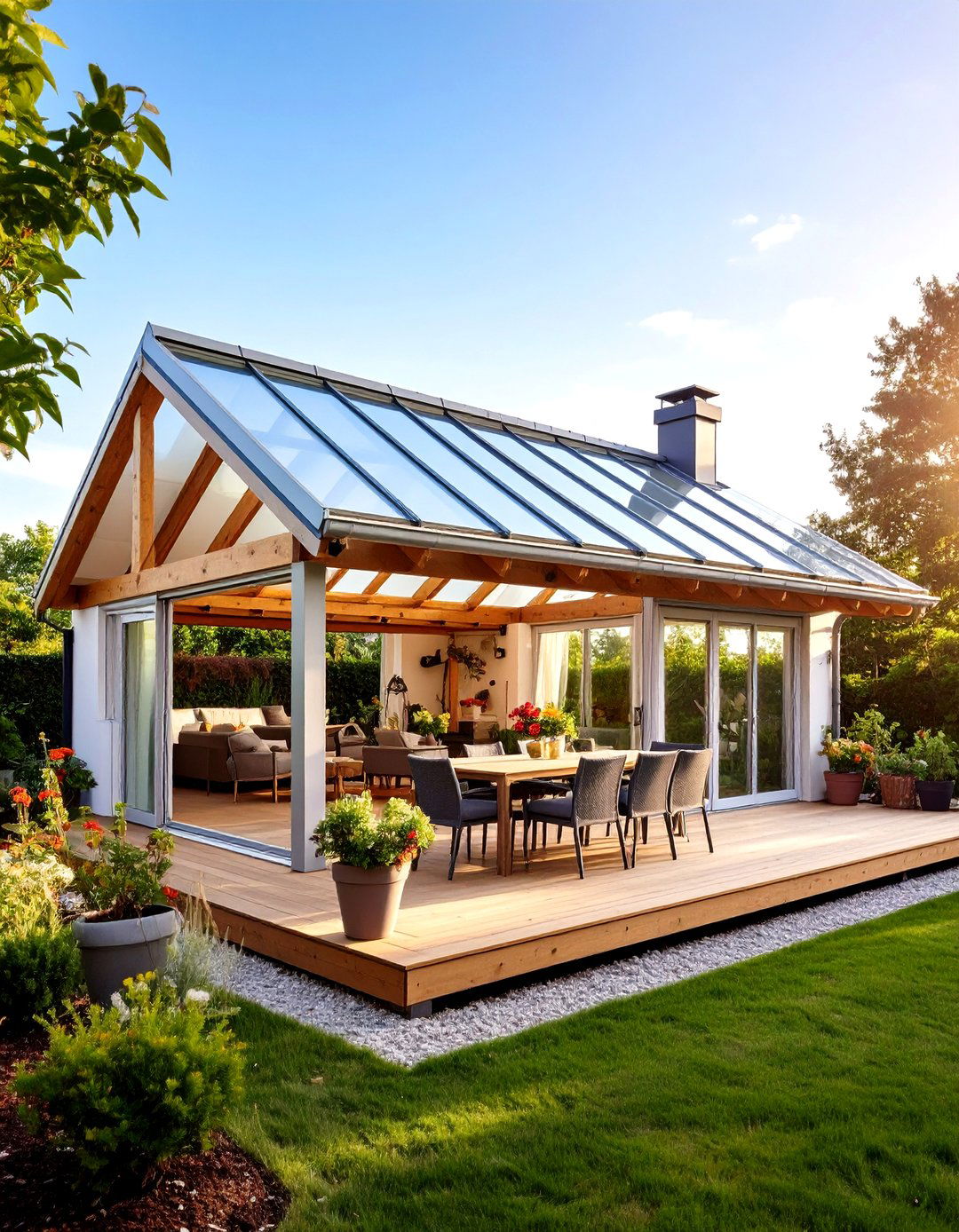
A gable patio roof glazed in twin-wall polycarbonate brings the outdoors in while filtering harsh UV. Sheets weigh 1⁄8 the mass of glass, so you can retrofit them onto existing rafters without beefier footings. Choose opal-tint panels where midday sun is brutal; the diffuse glow softens shadows and keeps dining tables cooler by up to 15 °F in testing. Clip-on aluminum joining bars speed weekend installation, and integrated condensation channels keep drips at bay. Because polycarbonate is impact-resistant, hailstorms leave only cosmetic scuffs — no shattered shards to sweep after the rain.
4. Shingle-Matched Gable Roof for Seamless Home Integration
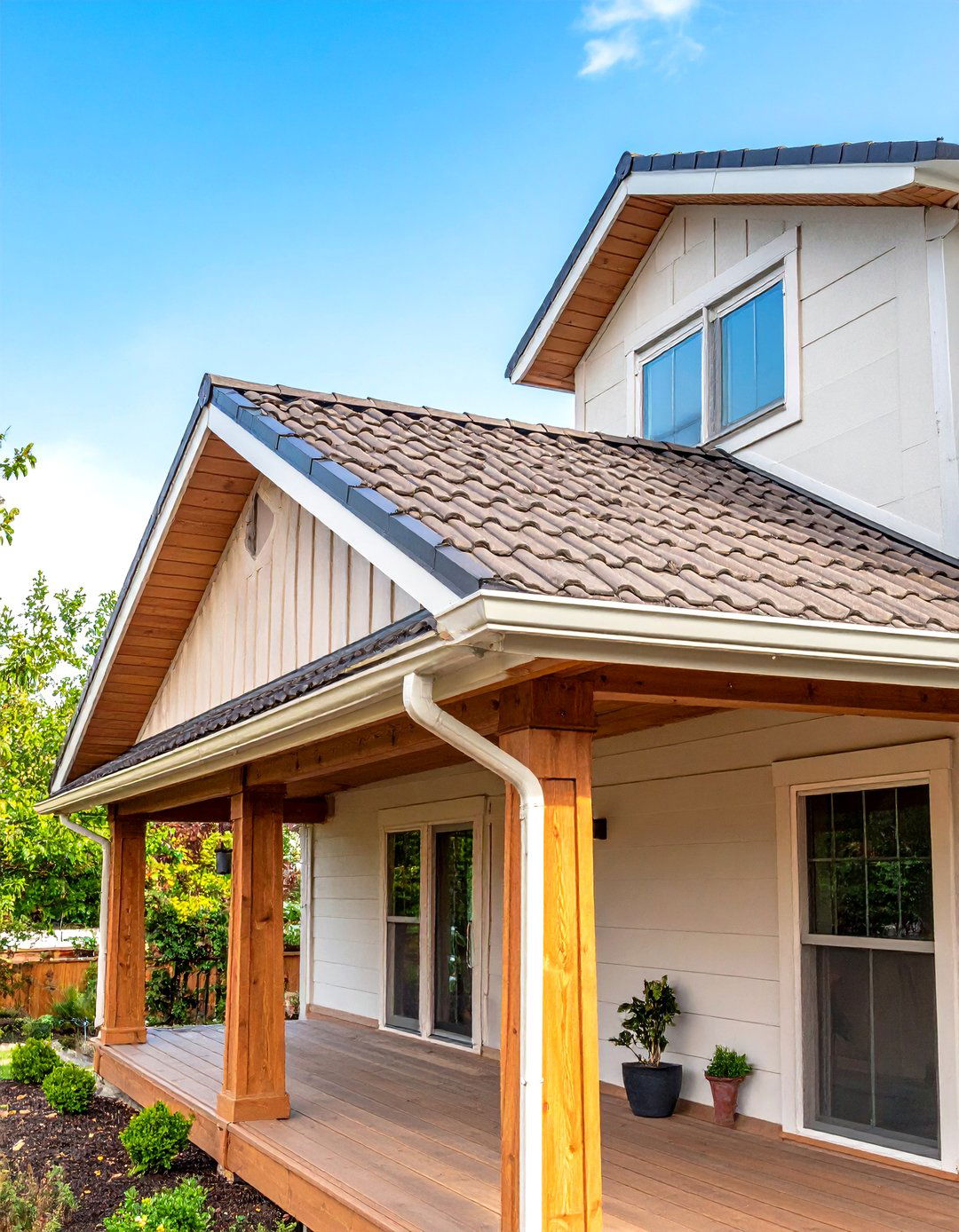
Matching the house roofing is still the quickest way to make a new gable patio roof look original. Order the same shingle brand, profile, and color; manufacturers often give a warranty boost when substrates align across structures. Extend fascia boards at identical heights, then repeat the soffit vents to maintain airflow continuity into the attic. Contractors report that buyers pay 4 – 6 % more for additions that appear “builder-installed, ” a payoff that can offset the $10 – $35 per-sq-ft labor premium typical for complex tie-ins. Finish with matching gutters to erase visual breaks altogether.
5. Vaulted Gable Ceiling with Exposed Beams
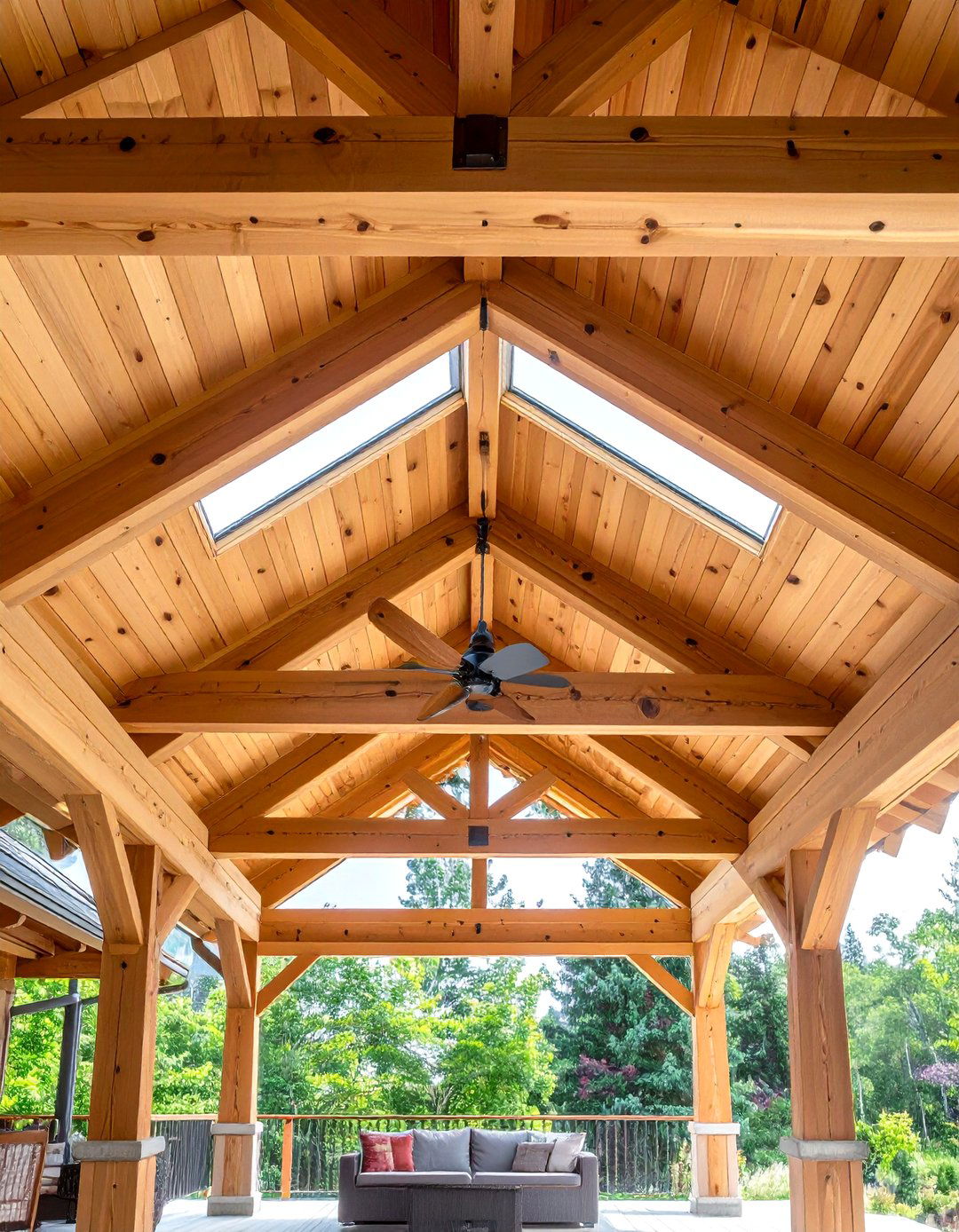
Nothing turns a patio into a lodge quite like a soaring, exposed-beam gable patio roof. Opt for pre-engineered trusses; they arrive precut, speed framing, and hide steel plates in the attic side for a clean underside. Stain beams a few shades darker than the ceiling planks to accentuate depth. Add a ridge skylight strip — the height diffuses glare better than flat roofs, cutting electric lighting needs at dusk. Because air pools above, include a slow-turning 72-inch ceiling fan to push warmth down for shoulder-season dinners, trimming propane-heater hours by roughly 20 %.
6. Rustic Reclaimed-Wood Gable Roof
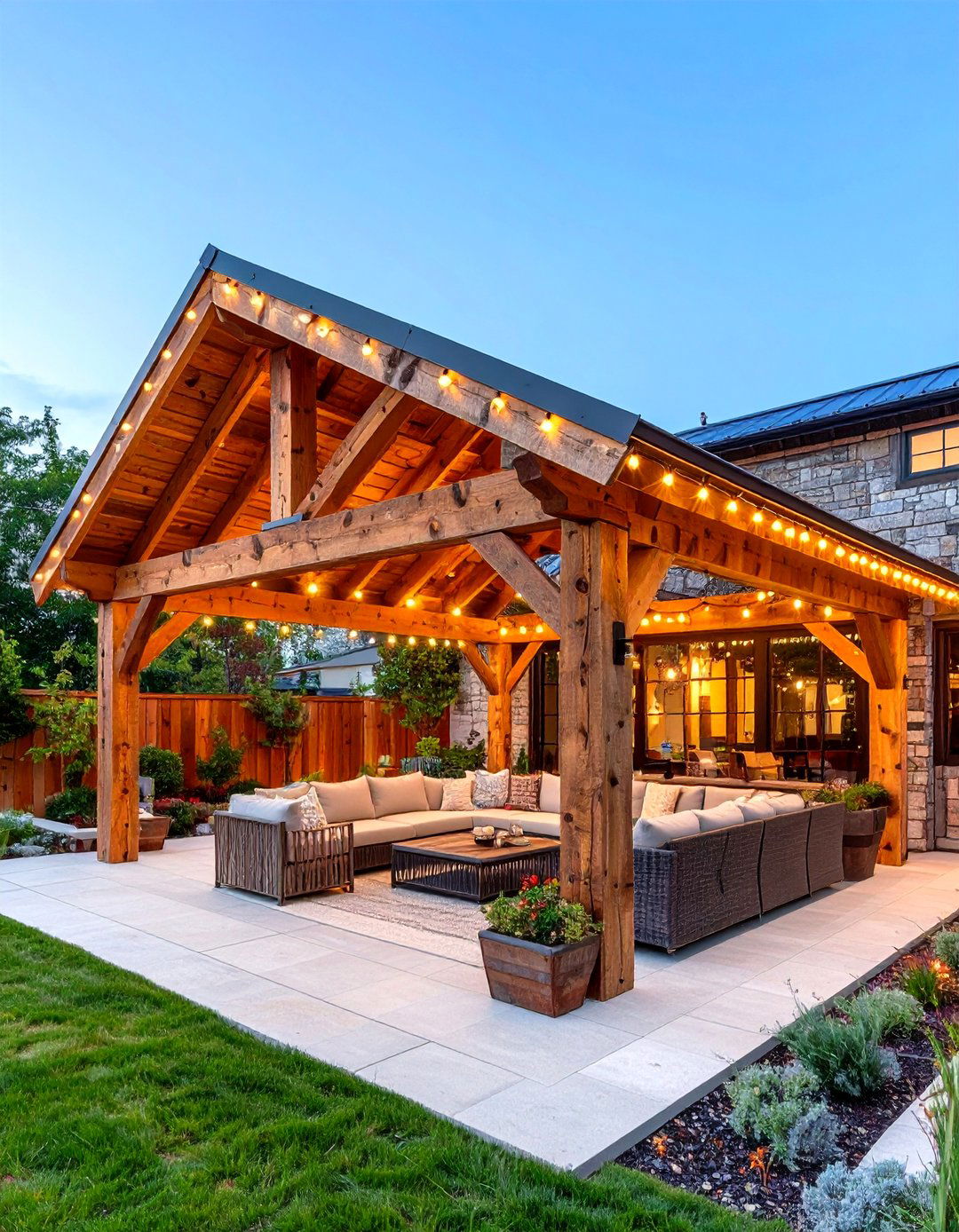
A reclaimed-wood gable patio roof weaves sustainability into style while saving on lumber surcharges. Source barn beams or wharf timbers — many salvage yards plane and treat them against insects. The weathered patina pairs beautifully with corrugated-metal roofing, a combo Australian designers list among 2025’s top eco chic pairings. Seal surfaces with low-VOC linseed-oil blends to lock in character without plastic sheen. Because reclaimed lumber may hide old nails, have a metal detector on hand before cutting. Finally, integrate LED rope uplights along rafters; their warm wash highlights knots and saw marks at night.
7. Mixed-Material Gable Roof (Steel & Wood)
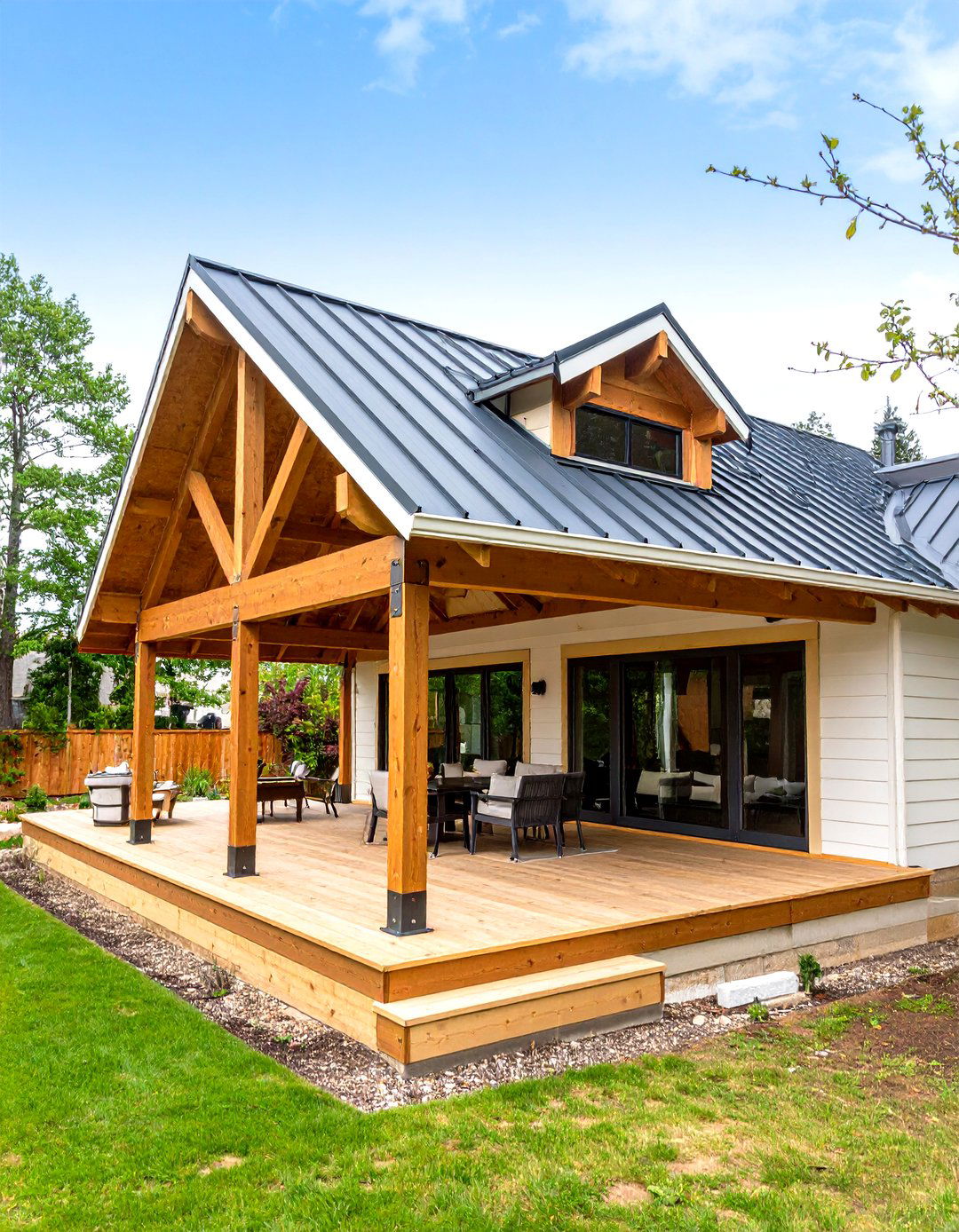
Blending steel posts with timber trusses yields a hybrid gable patio roof that balances strength and texture. Welded steel columns resist termites and slim down to 4-inch widths, freeing sightlines toward gardens. Bolt cedar king-post trusses atop; their natural grain warms the steel’s industrial vibe. Use concealed steel seat brackets for a floating look, a trick often featured in high-end Houston builds. Finish with standing-seam roofing over a foil-backed insulation blanket to muffle rainfall — clients report a 6-dB noise drop versus bare metal sheets.
8. Solar-Ready Gable Patio Roof

As energy costs climb, a gable patio roof with integrated photovoltaic panels pays back quickly. The pitched face aligns well for 20- to 35-degree panel angles — ideal across much of the U. S. and Australia. Use color-matched frame kits so solar blends into the roofing plane, then wire micro-inverters under each module to protect performance when a leaf shades just one panel. A 10-panel array can offset the annual power used by outdoor lighting, ceiling fans, and an electric grill, according to recent case studies.
9. Retractable Shade Panels under Gable Roof
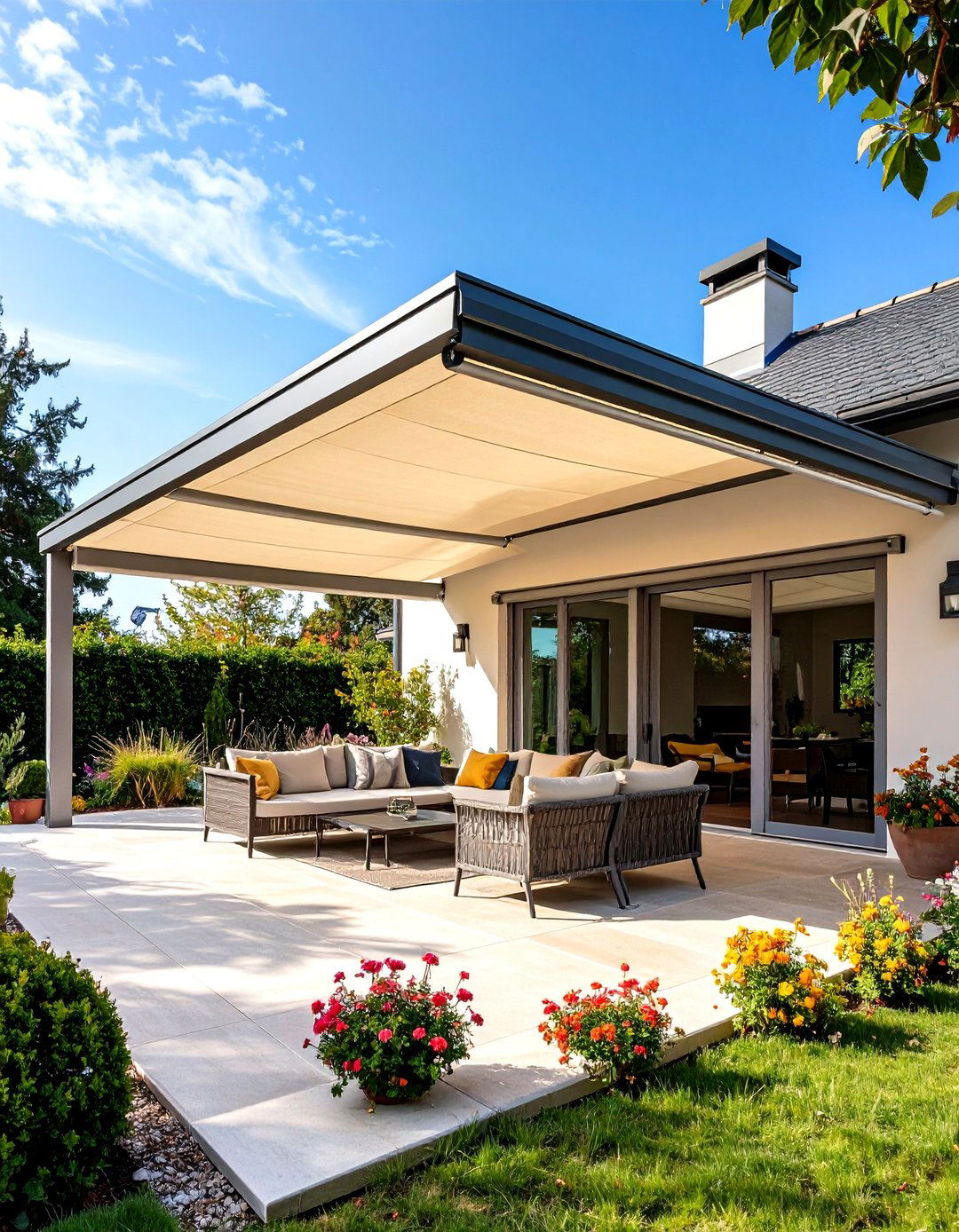
Pairing a fixed gable patio roof with slide-out fabric shades grants extra control on glare days. Mount aluminum tracks beneath rafters; acrylic panels glide effortlessly and stow at the ridge when not in use. Designers like the approach because fabric pops add color without permanent commitment, resonating with the bolder palettes trending for 2025 patios. Choose solution-dyed acrylic for fade resistance, and specify marine-grade stainless hardware near pools. DIYers report weekend-project success when tracks arrive pre-drilled, keeping total costs under $2, 000 compared with motorized louvers.
10. Skylight-Pierced Gable Roof
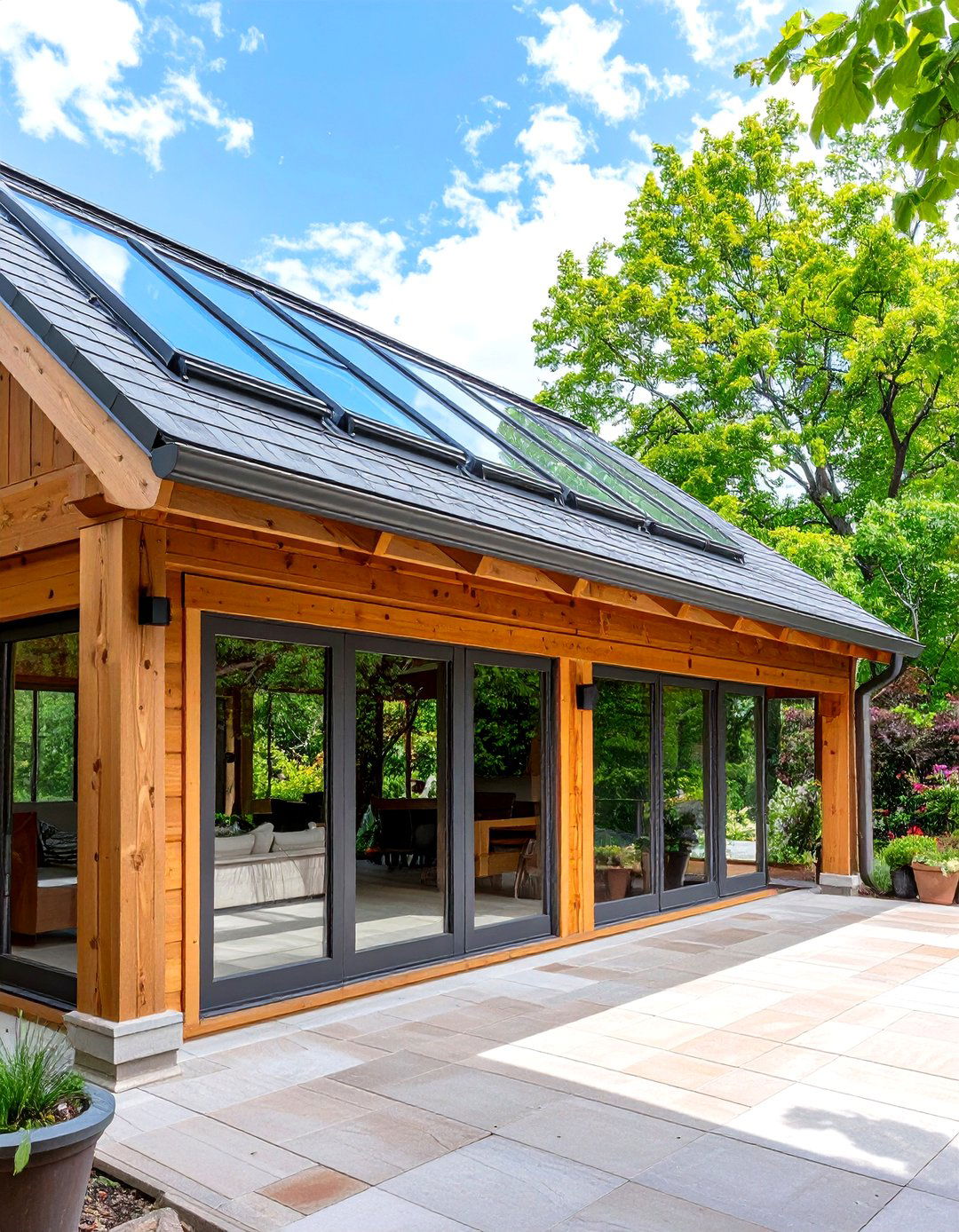
Installing fixed skylights along the ridge transforms a dark gable patio roof into a naturally lit atrium. Use tempered glass with low-E coatings to block up to 80 % of UV while admitting high-angled winter sun. Manufacturers now offer deck-mount units sized to standard rafter spacing for easier retrofits. Curb flashing kits funnel runoff around openings, preserving the leak-resistant reputation gables enjoy over flat competitors. Expect a 15 – 20 °F afternoon temperature boost in shoulder seasons — helpful for plant cuttings or lazy brunches without hitting the heater switch.
11. Gable Roof with Integrated Gutters & Rain Chains
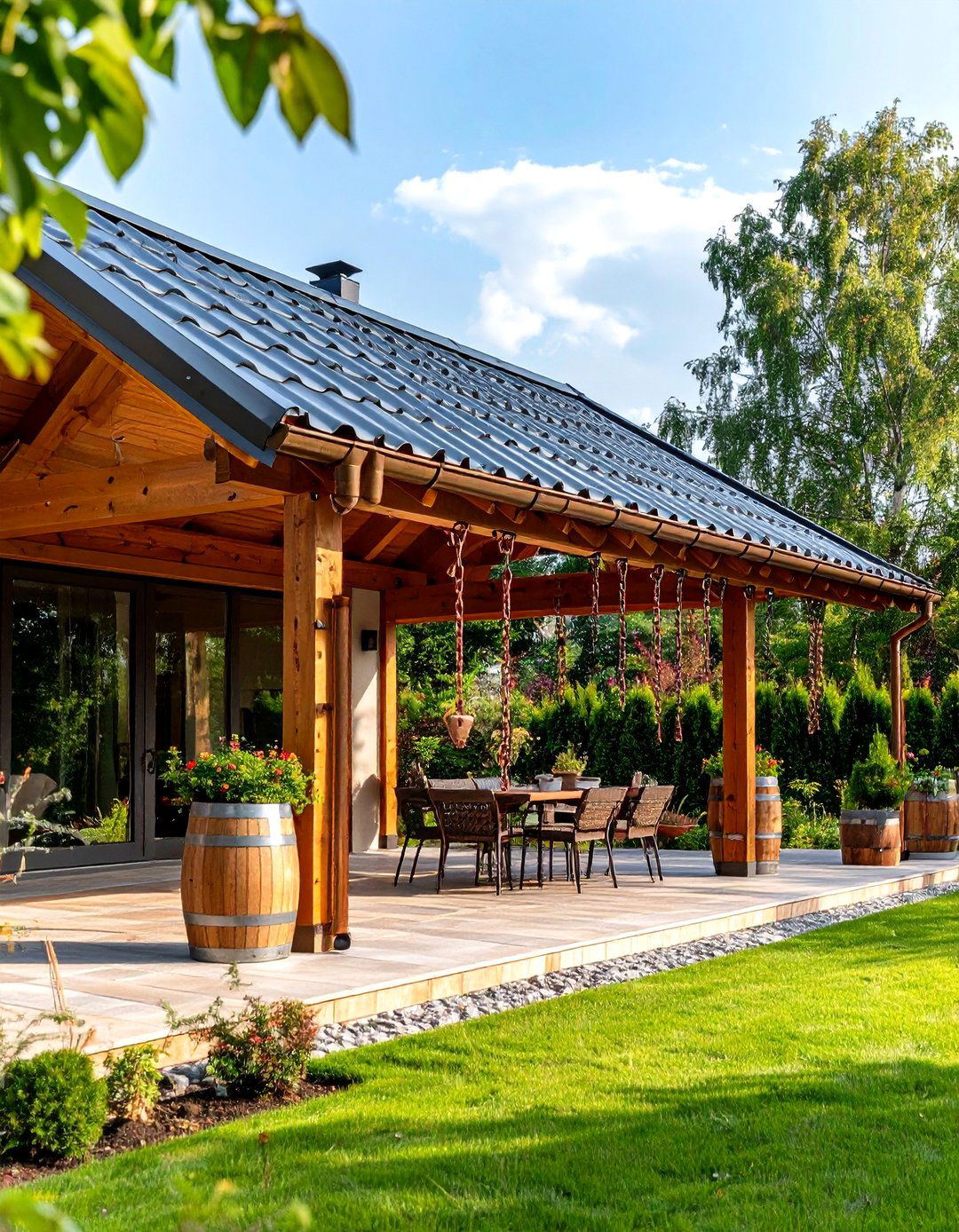
Channeling stormwater elegantly is easy with a gable patio roof designed for concealed box gutters that empty into sculptural rain chains. Because gables shed to two sides, you can collect run-off in matching barrels for garden irrigation — roughly 600 gallons on a 200 sq ft cover during a 1-inch rain event. Steel box gutters powder-coated to frame color virtually disappear, a custom-builder favorite in show homes. Swap downspouts for hammered-copper rain chains; their soothing trickle masks city noise and doubles as kinetic art.
12. High-Pitch Gable for Snow & Rain Regions
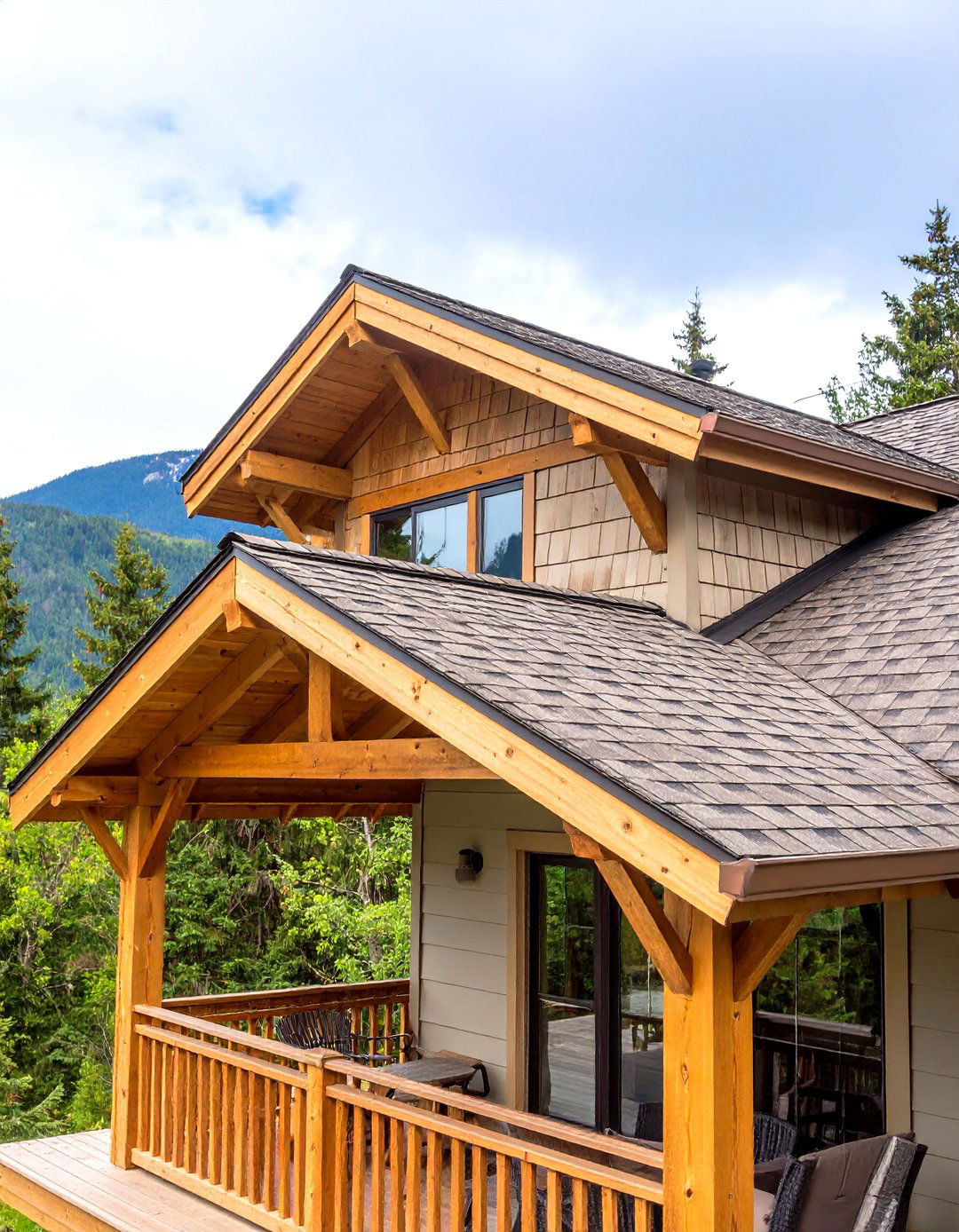
Where heavy snowfall or tropical downpours reign, a steep-slope gable patio roof (8⁄12 or more) outperforms shallow pergolas by shedding loads quickly. Building-code charts show snow capacity rises dramatically with pitch, often allowing lighter rafters and fewer posts, which lowers material spend despite taller walls. Add ice-shield membrane under shingles in freeze zones and specify 2×6 tongue-and-groove ceiling boards to combat uplift forces. In cyclone-prone areas, screw-down Colorbond® sheets rated for 200 km/h winds keep the structure intact while maintaining that classic triangular silhouette.
13. Low-Pitch Gable for Windy Coastal Areas
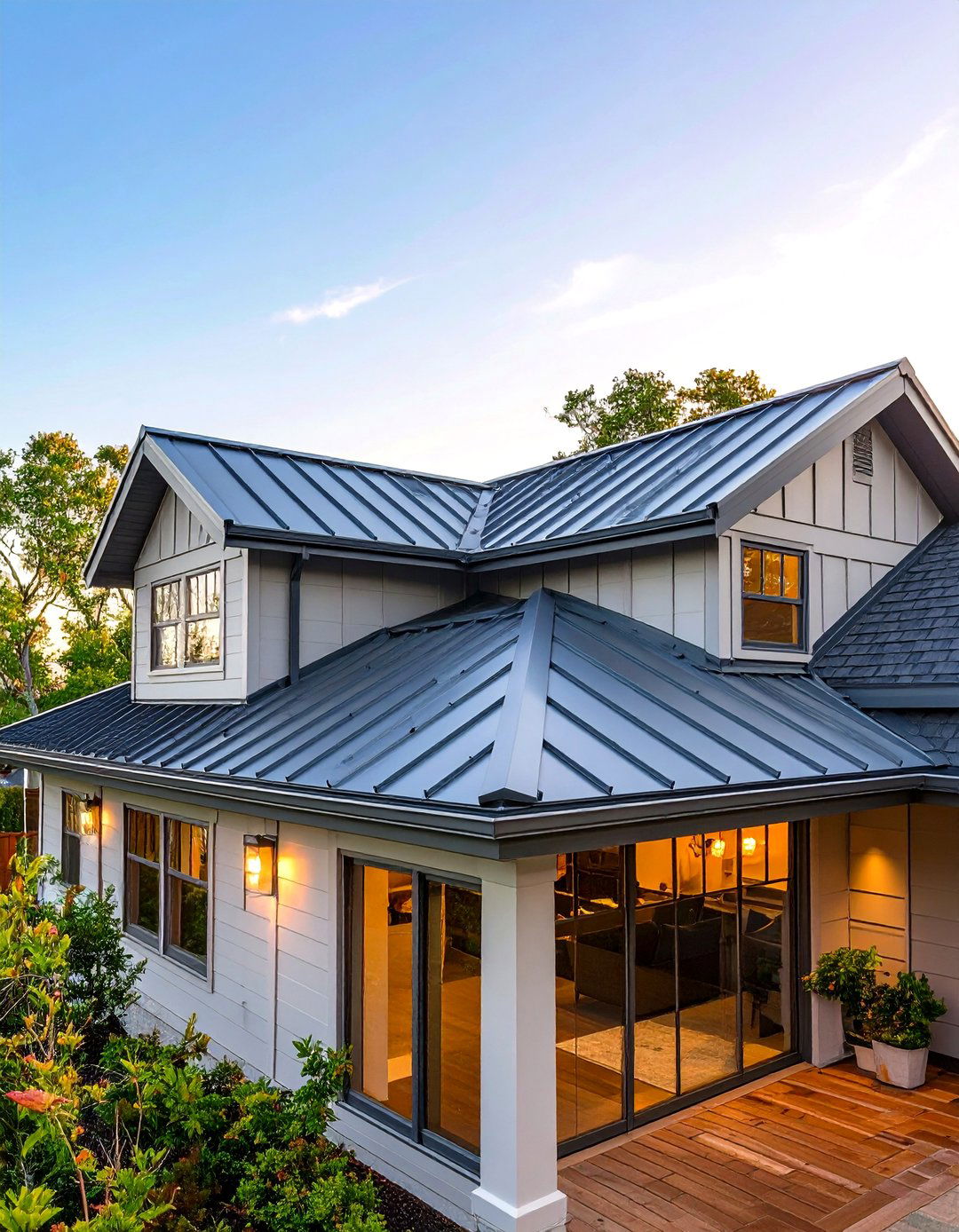
Conversely, a low-pitch gable patio roof (3⁄12) hugs the house and reduces uplift in high-wind coastal belts. Engineers recommend clip-locking metal sheets to keep seams tight; their continuous ribs act as built-in battens, eliminating loose tiles that can become projectiles. Use stainless screws with neoprene washers to survive salty spray, and design soffit vents to flush humid air, preventing mildew on beachfront furniture. Coastal builders find adding clear PVC ridgeline panels restores lost headroom light, preserving the breezy feel the shoreline demands.
14. Dual-Gable Roof Over Split-Level Patio
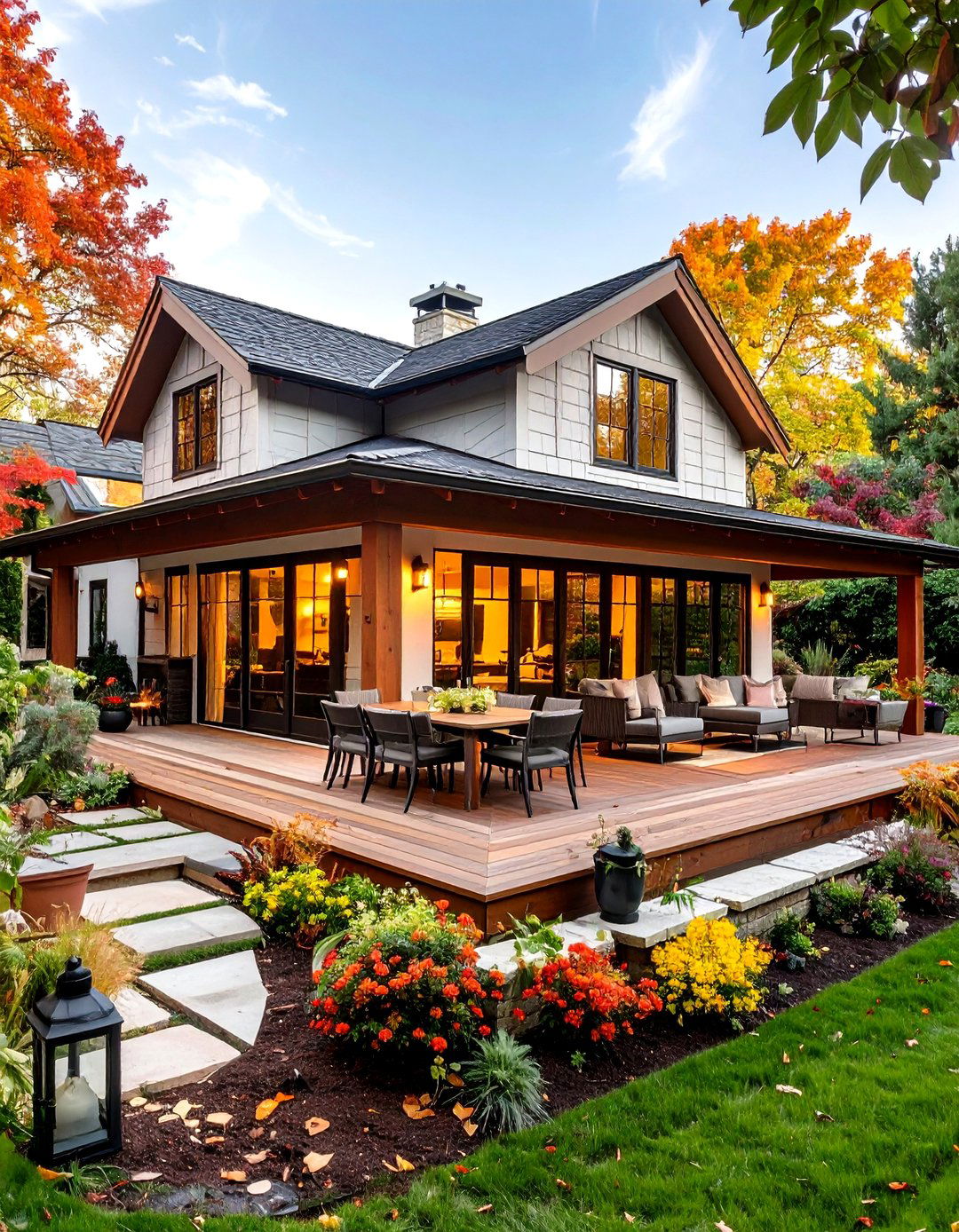
If your backyard steps down, a dual-gable configuration bridges levels beautifully. Frame two opposing gable patio roofs at different heights, then join them with a central cricket to shed water sideways. The “roof-scaping” trick defines separate zones — lounge above, dining below — without visible walls. Custom patios featuring multi-gable planes fetch higher renovation ROI because they read as bespoke architecture rather than bolt-on kits. Ensure the lower gable’s ridge aligns below adjacent second-story windows to keep views open from the house interior.
15. Poolside Gable Roof with Outdoor Kitchen
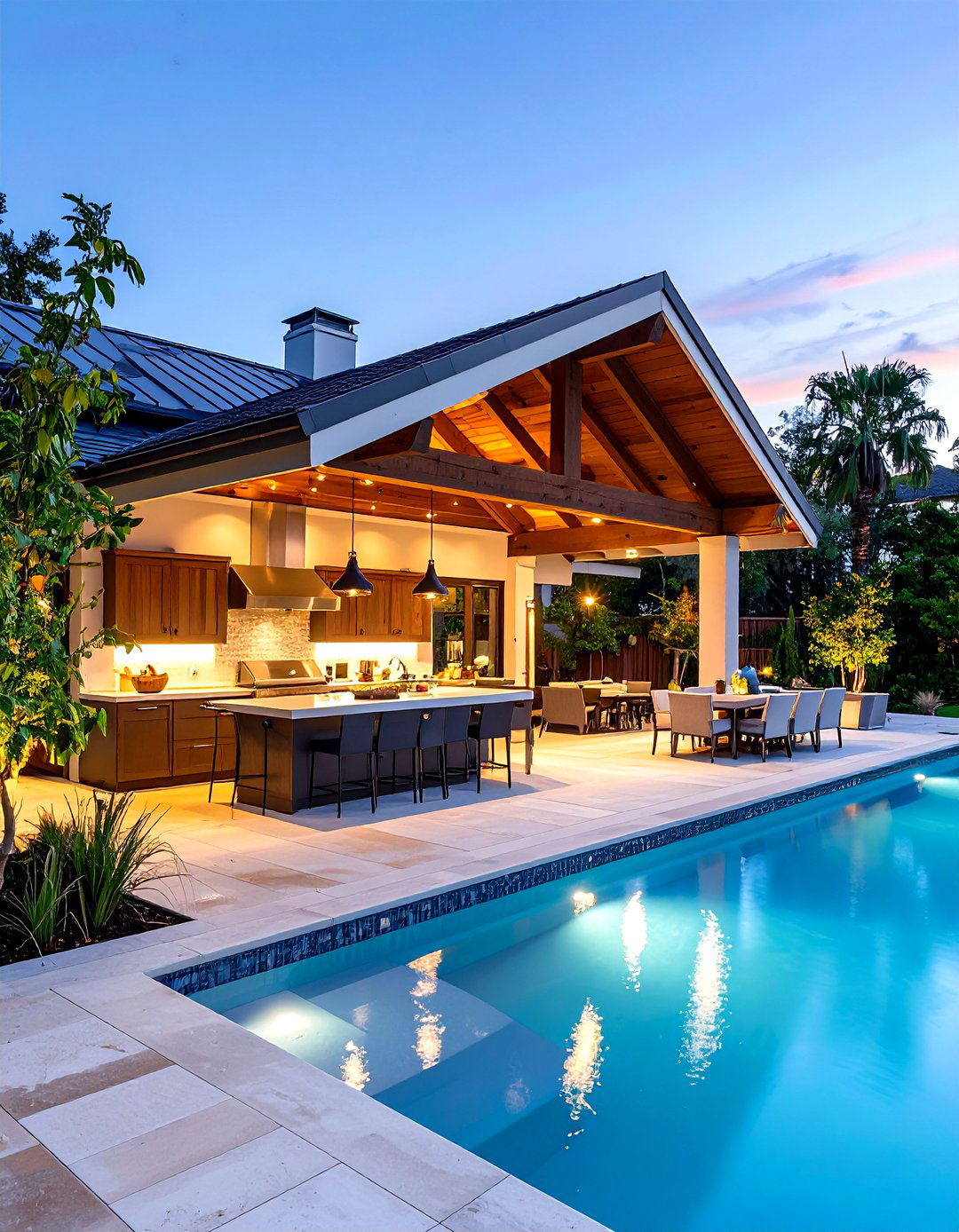
A gable patio roof beside the pool supports an alfresco kitchen while shading swimmers during peak UV hours. Use non-combustible cement-board sheathing under the cooking zone and vent the gable peak with hidden louvers; Allied Outdoor Solutions notes gable airflow cuts grill-area heat and smoke buildup noticeably. Slip-resistant porcelain pavers transition smoothly from wet feet to dining stools, and marine-grade fans keep insects off food. Add dimmable LED strips along tie beams to switch from daytime cannonball fun to sunset dinner party without harsh glare.
16. Compact Gable Roof for Townhomes
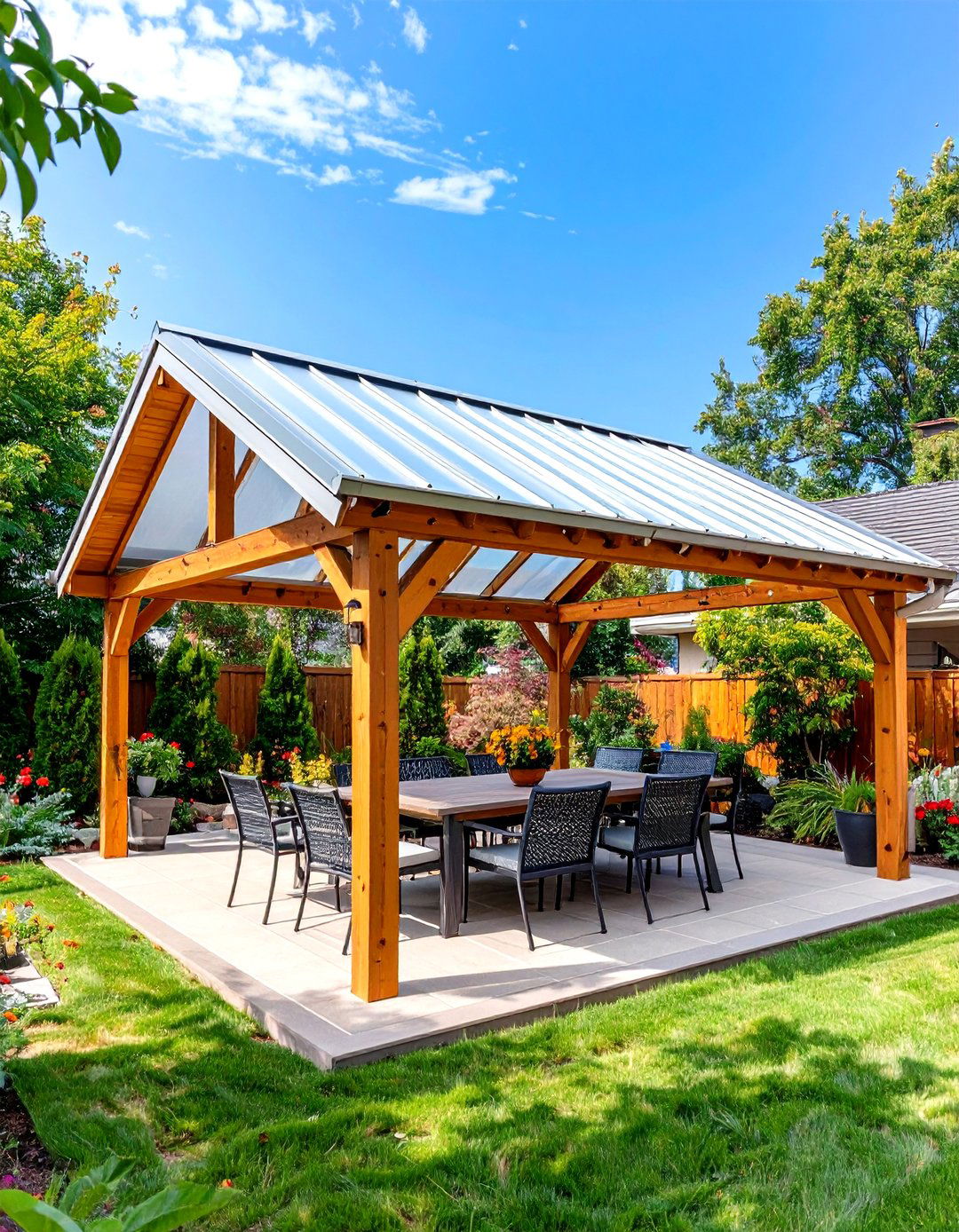
Townhome yards crave efficiency, and a 10×12-foot gable patio roof covers a bistro set nicely while staying within most HOA height limits. Pre-engineered aluminum kits in powder-white reflect light into narrow lots and assemble with basic tools, cutting pro labor fees that average $70 to $155 per sq ft for bespoke builds. Attach snow-load upgrade brackets if you live above the frost line, and choose translucent polycarbonate roofing to keep neighboring units bright — your patio feels open, and the HOA loves that no one’s view is blocked.
17. Pergola-Gable Hybrid with Louvered Panels
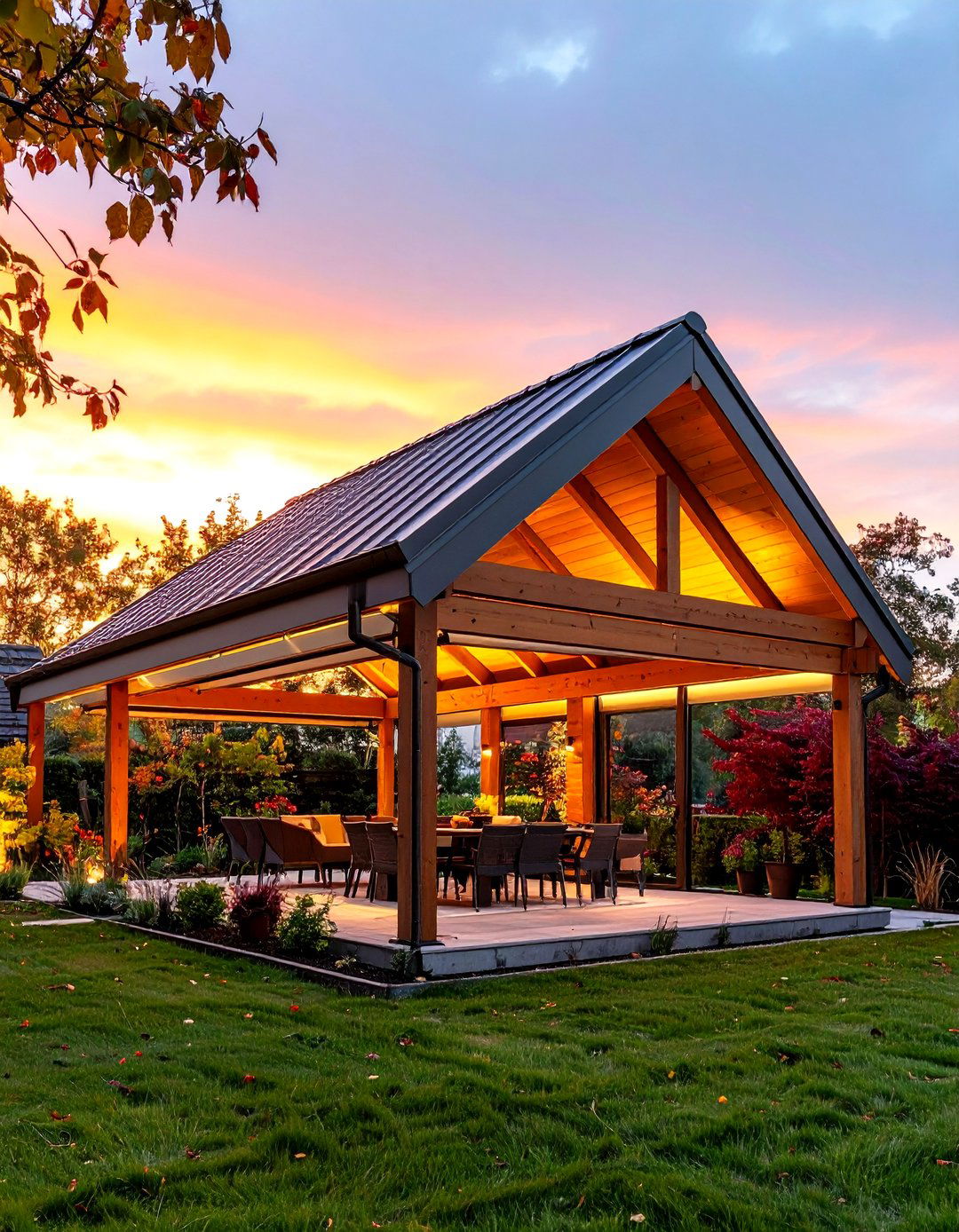
Marry the airy vibe of a pergola with the shelter of a gable patio roof by inserting motorized aluminum louvers between rafters on one side only. Close them for monsoon protection; open them to stargaze. DecorMatters calls adjustable shade structures a top trend for hotter summers ahead. Integrated rain sensors snap louvers shut automatically, so cushions stay dry even if you’re away. The hybrid form reduces mechanical parts versus full-roof louver systems, trimming cost yet keeping the strong triangular profile that architects favour.
18. Green Roof Gable with Climbing Vines

Give nature prime real estate by training jasmine or creeping fig over a lattice fitted to the outer face of your gable patio roof. The plant canopy cools the cover beneath by up to 10 °F through evapotranspiration, studies show. Stainless tension cables span between barge rafters; vines weave along them without puncturing roofing. Choose drought-tolerant species in arid regions to minimise irrigation. Come spring, blossoms perfume the patio and soften sharp roof angles into an inviting garden nook.
19. Insulated-Panel Gable Roof for Year-Round Use
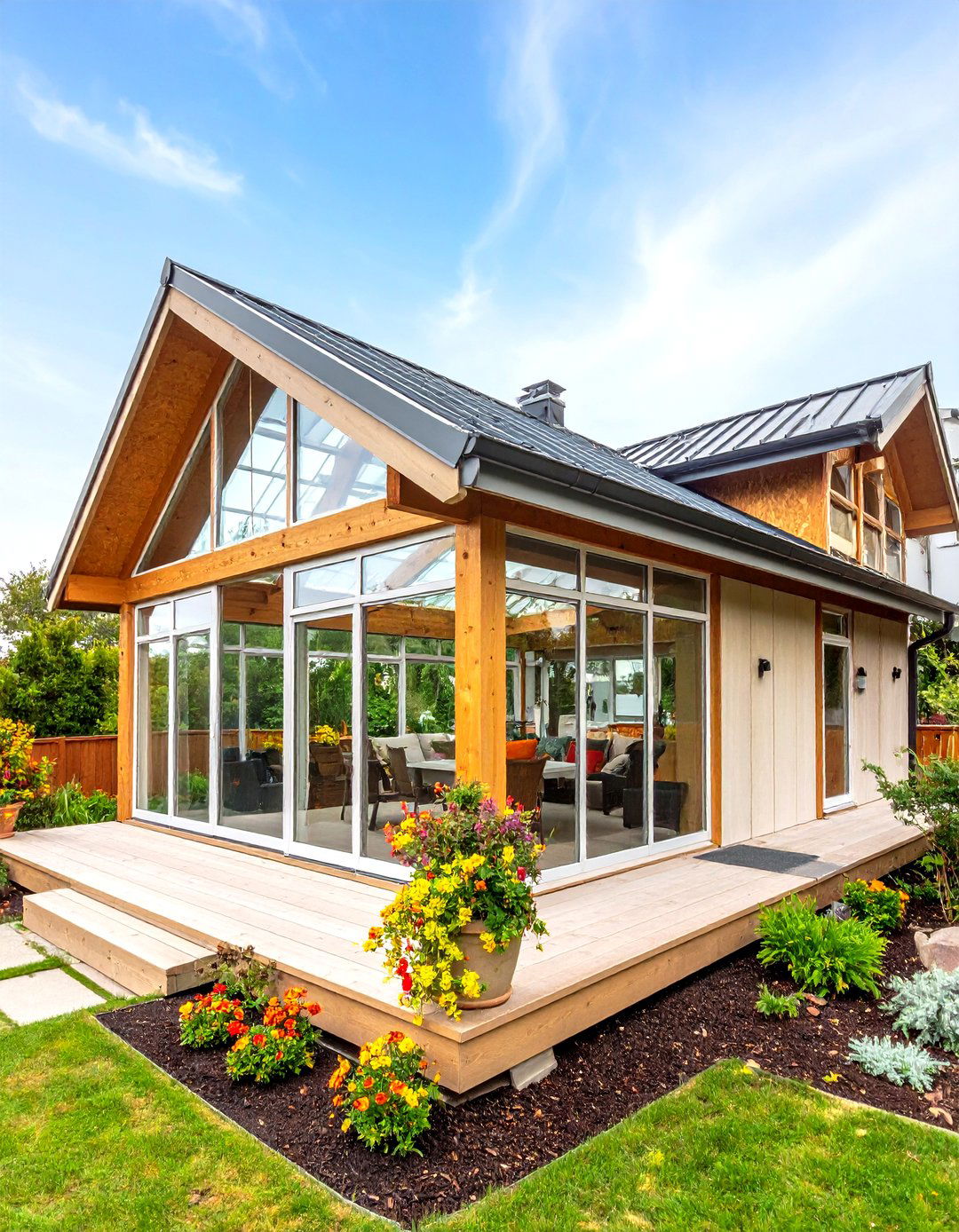
Structural insulated panels (SIPs) slip into a gable patio roof frame and sandwich high-density foam between OSB skins, delivering R-16 or better in just 3-inches. Paired with zip-track clear blinds, the space turns into a three-season sunroom, extending patio use well beyond summer. SIPs also dampen rain noise — homeowners who swapped from bare metal report peaceful conversations even during heavy showers. Because panels arrive precut, onsite waste drops sharply, supporting the sustainability push noted in 2025 patio reports.
20. Colorbond® Steel Gable Roof in Bold Hues
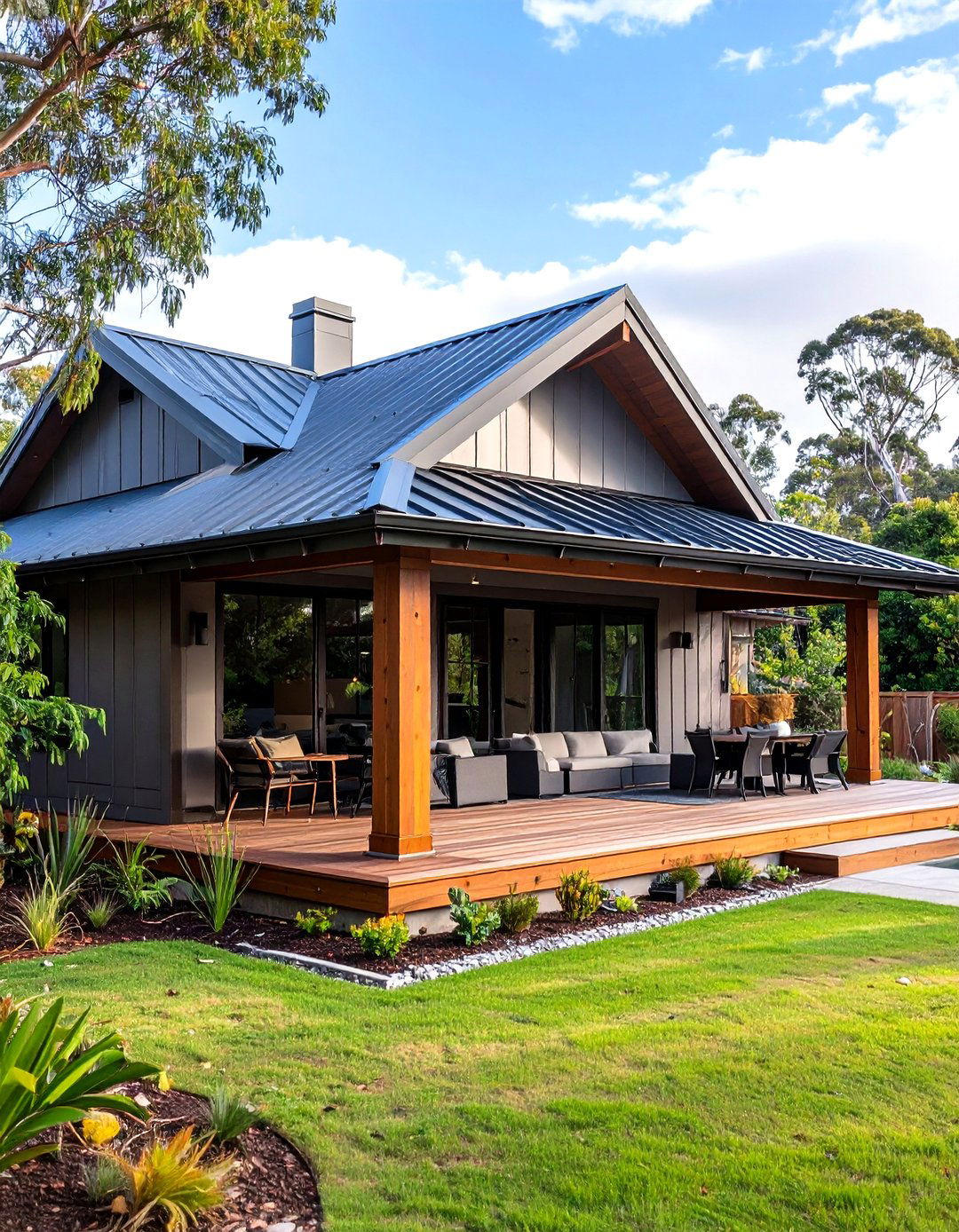
Australian fabricators swear by Colorbond® steel for a gable patio roof that pops. Its baked-on finish offers 22 contemporary colors, and the latest Matt series gives a powdery low-glare look prized by architects. Dark tones like “Monument” frame lush gardens dramatically, while lighter “Surfmist” keeps heat gain low — solar reflectance index ratings appear right on the spec sheet. Because panels arrive cut-to-length, install time is rapid, reducing site disruption. Finish edges with matching box gutters for a crisp, gallery-style outline.
21. Transparent Glass Gable Roof
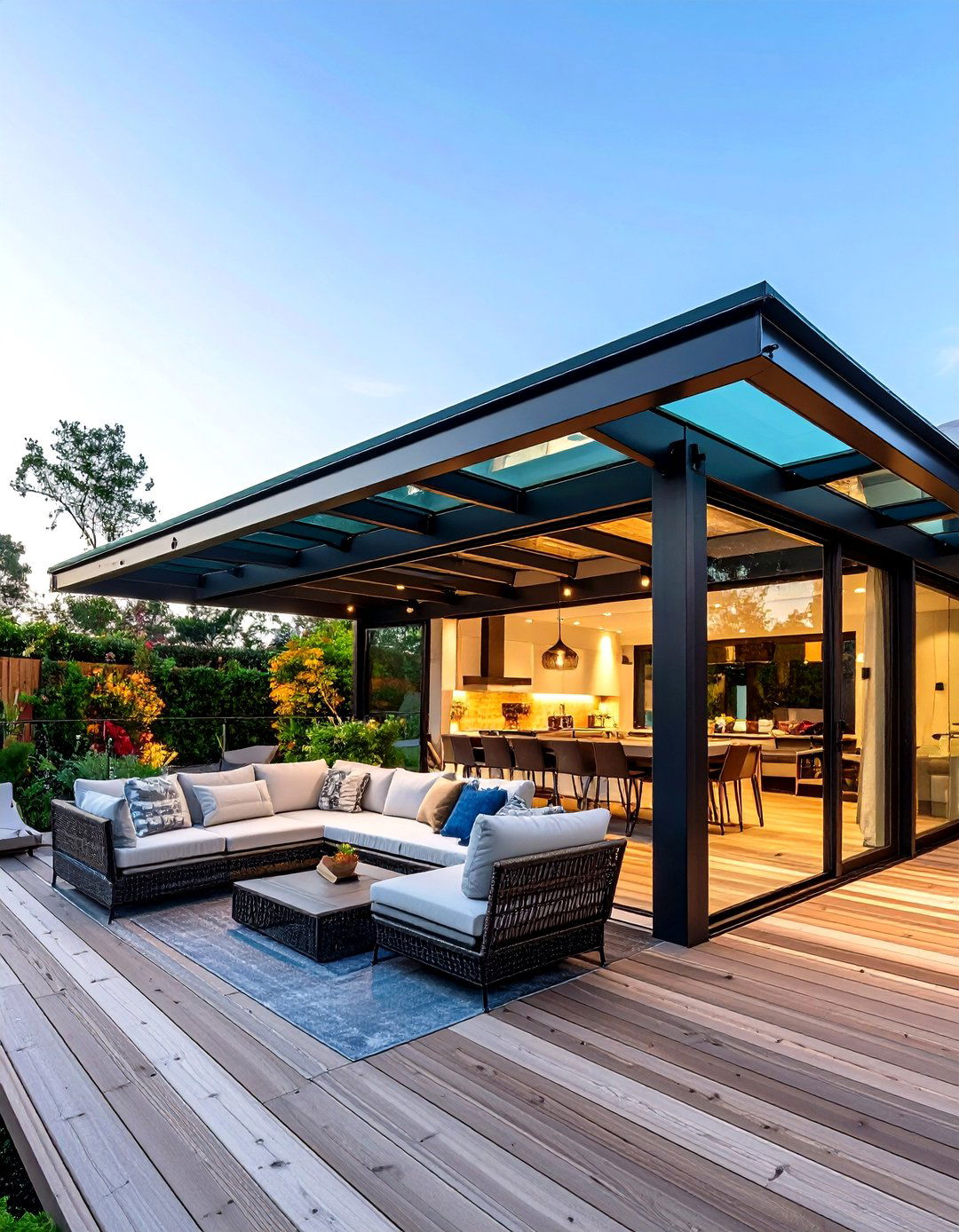
Craving uninterrupted sky views? A laminated-glass gable patio roof secures that wow factor. Modern structural glass beams — clear, layered planks reinforced with interlayers — span up to 15 feet without steel, leaving nothing but horizon overhead. Specify low-iron “extra-clear” panes to avoid the typical green tint. Combine with motorized exterior shades so you can tame glare on scorching days; sensors deploy them only when sunlight crosses preset lux levels. For privacy, switchable electrochromic glass clouds over at night, doubling as a movie-night projection surface.
22. DIY Truss Gable Roof Kit Idea
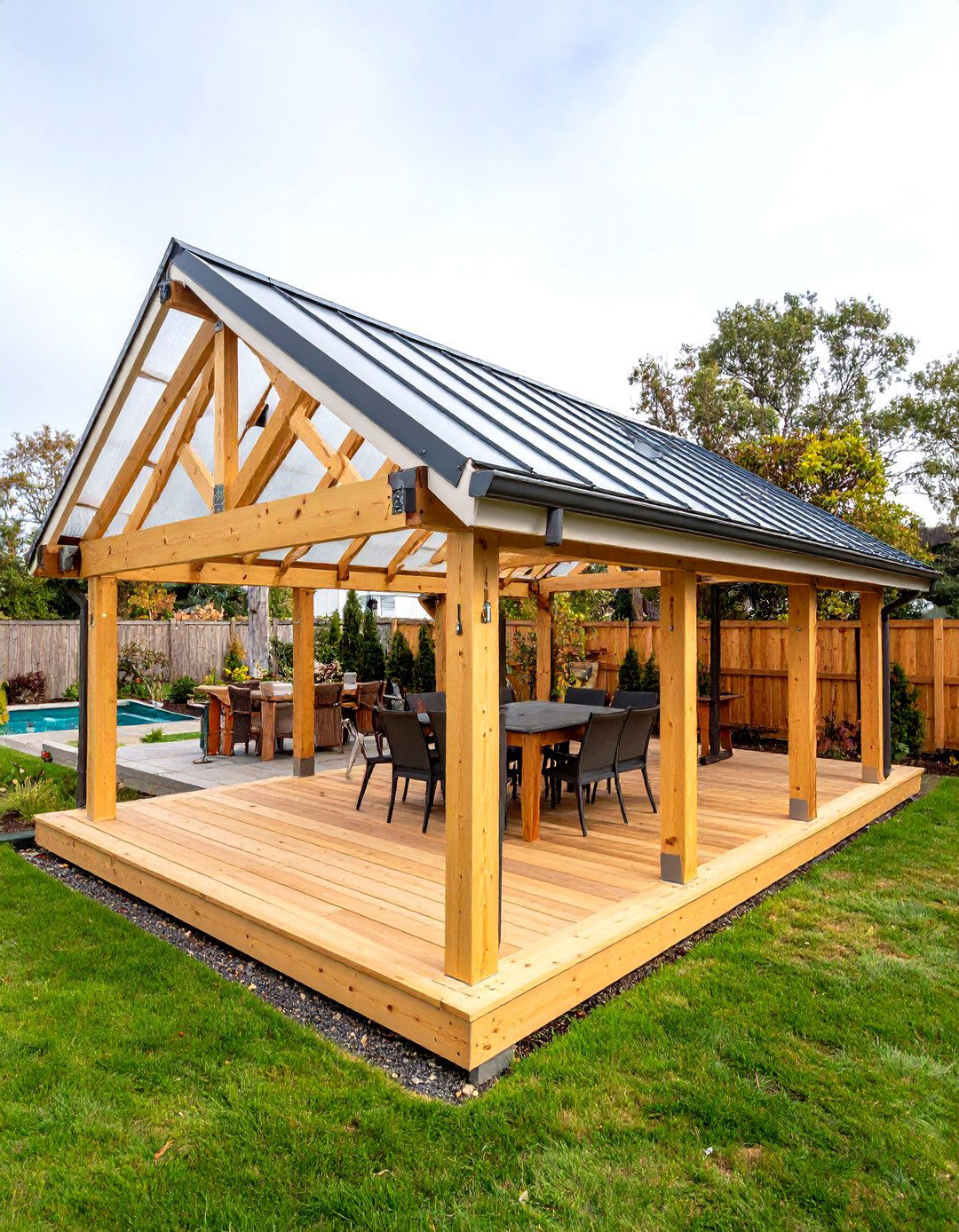
Weekend warriors can erect a modest gable patio roof using pre-cut truss kits delivered with stamped engineering sheets. YouTube build logs estimate two handy friends frame a 12×16-foot cover in a single day, saving roughly $8 k versus turnkey quotes. Use structural-grade screws instead of nails for stronger uplift resistance and faster assembly with impact drivers. Finish with corrugated polycarbonate for lighter hoisting. Remember to submit drawings to council — many areas waive fees for detached covers under 200 sq ft, further trimming costs.
23. Budget-Friendly Canvas-Insert Gable Roof
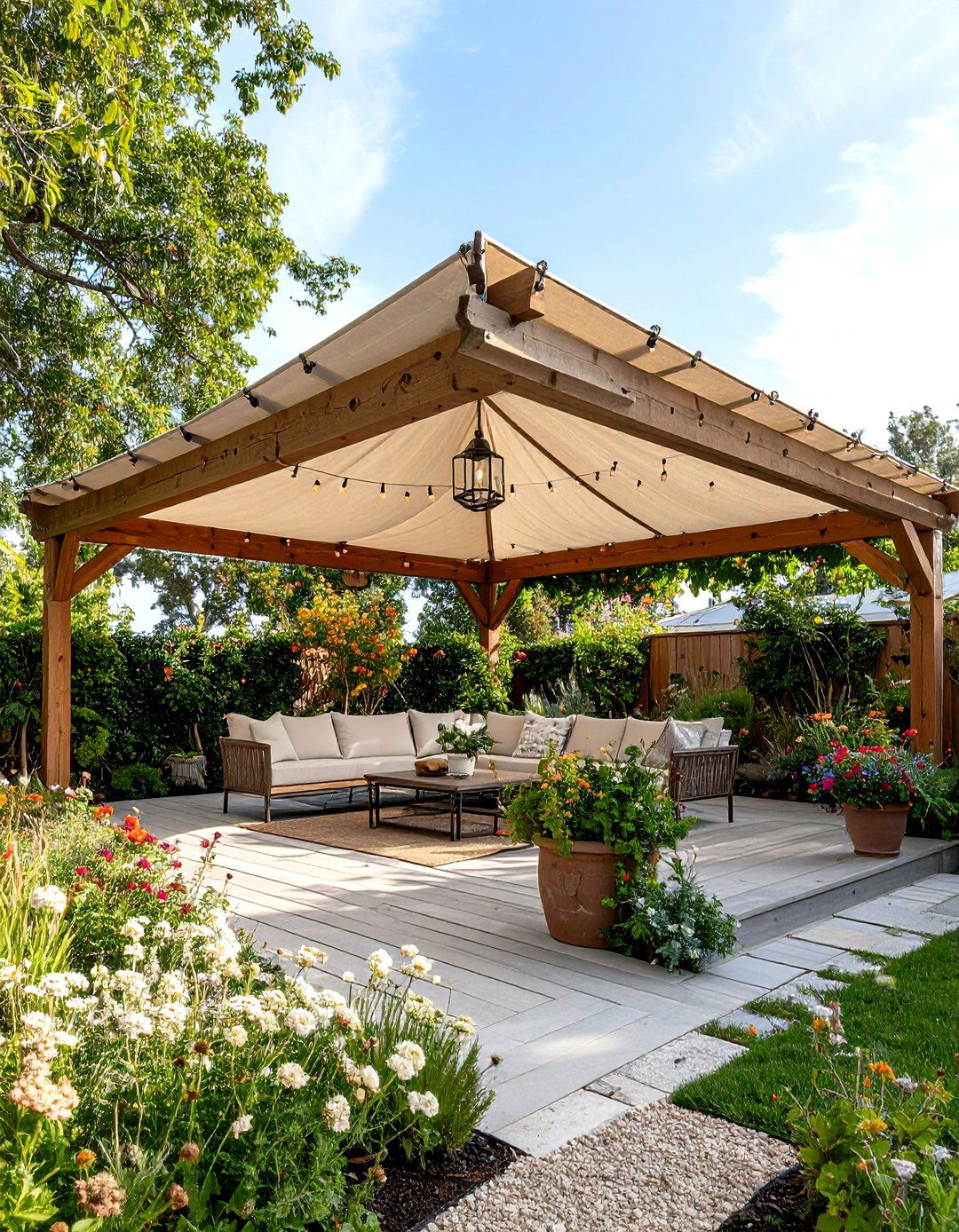
When funds run tight, stretch a weather-treated canvas between timber gable rafters for a quick, bohemian-style gable patio roof. Marine-grade fabric with UV inhibitors lasts 8 – 10 years if tensioned correctly. Install stainless turnbuckles at ridge and eave beams; periodic tightening keeps water from ponding. The breathable weave drops midday temps while still blocking 98 % of UV. Canvas costs as little as $2 per sq ft — perfect for renters or anyone testing a layout before splurging on permanent roofing.
24. Smart-Lighted Gable Roof with LEDs
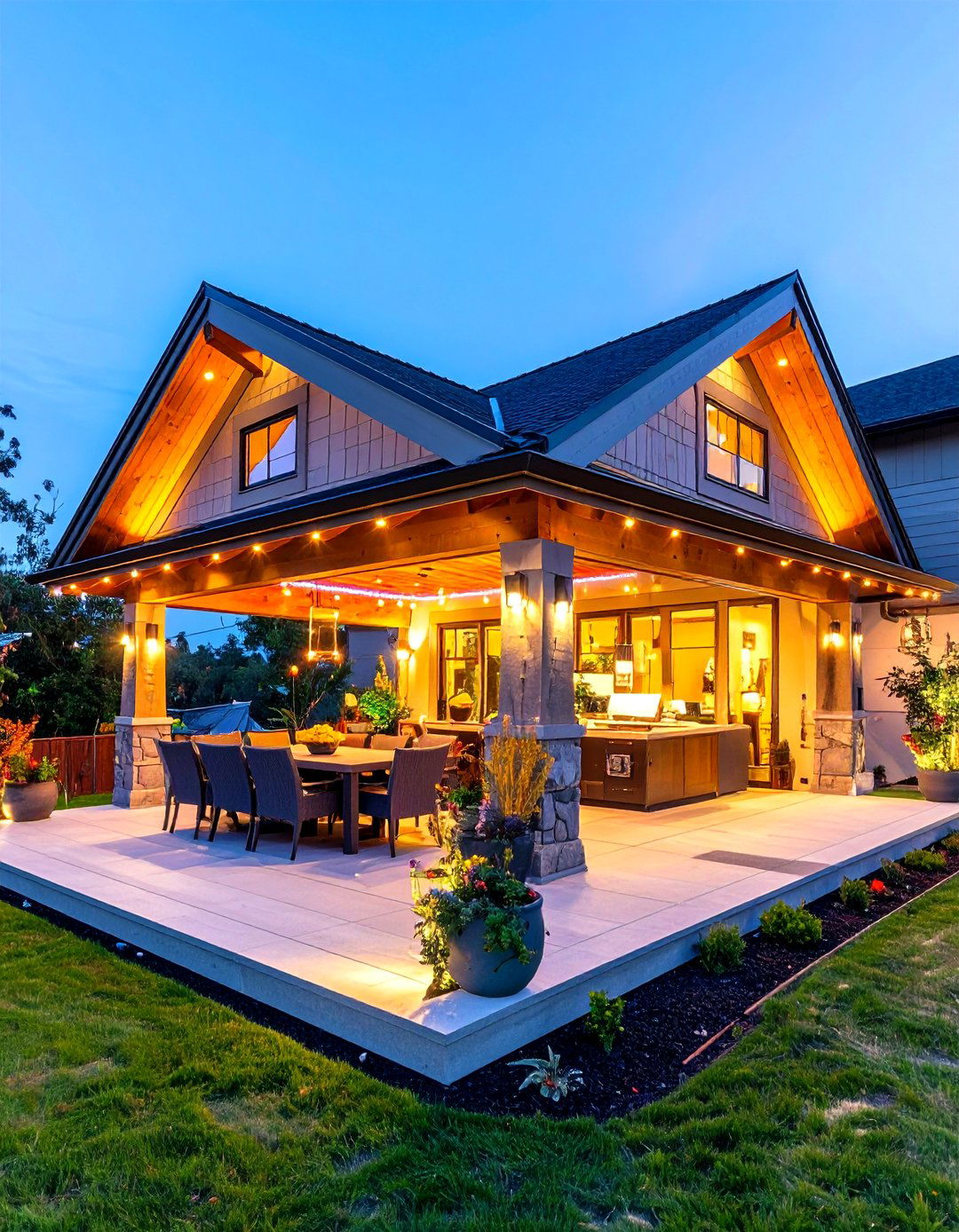
A discreet network of smart RGB-W LED strips hidden in the soffit edges lets your gable patio roof shift ambience with a voice command. Sync soft amber for dinner, turquoise for pool parties, or cycle colors for holiday cheer. Low-voltage drivers plug into solar batteries mounted in the gable cavity, so wiring stays invisible. Home-tech trackers list lighting automation among top three patio upgrades homeowners crave for 2025. Motion sensors fade lights down after guests leave, saving energy and neighbors’ sleep.
25. Heritage-Style Gable Roof with Decorative Gables
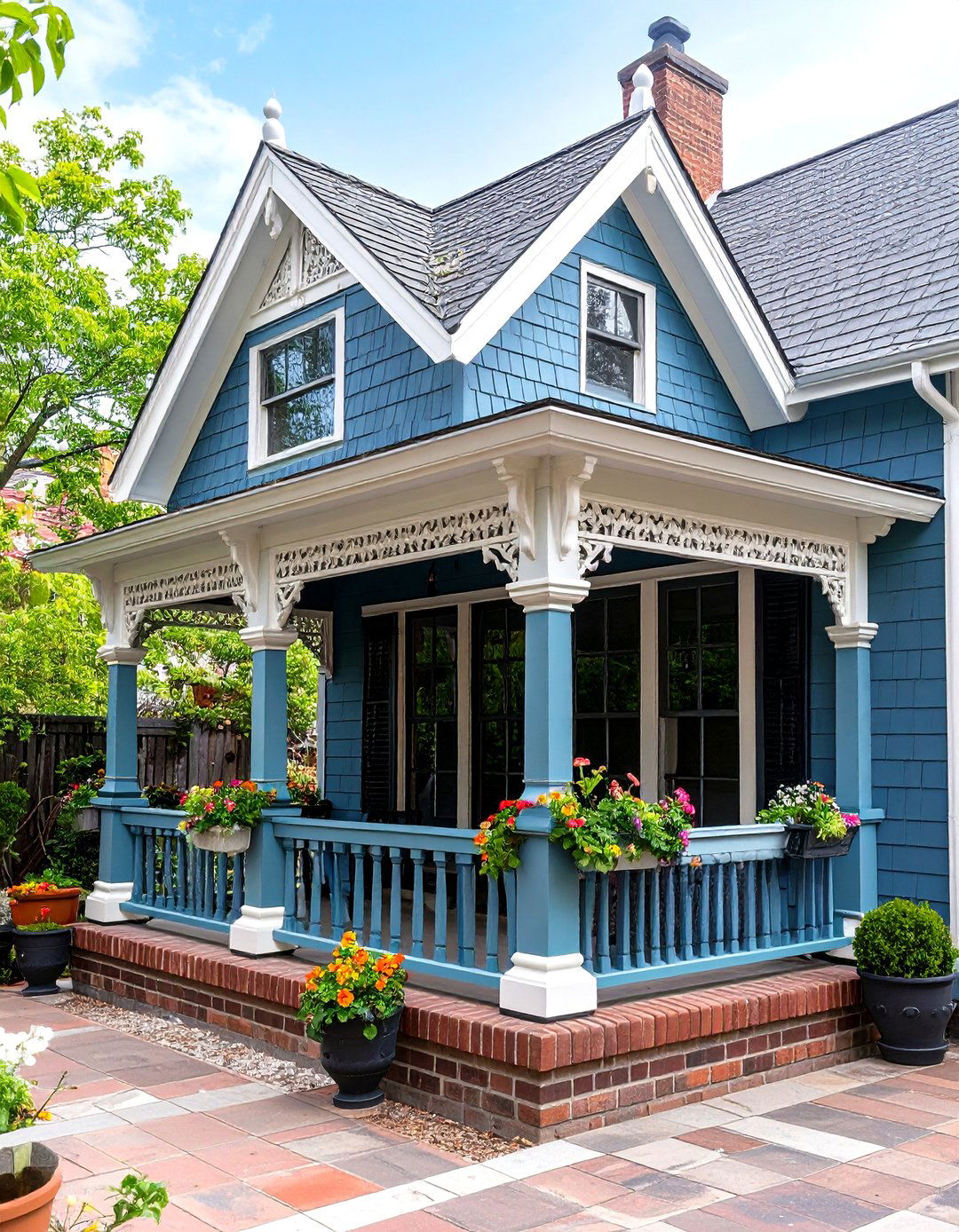
Celebrate architectural roots by adding fretwork or corbels to your gable patio roof. Victorian-inspired bargeboard patterns laser-cut from PVC resist rot yet mimic classic timber scrolls. Paint them glossy white against deep-tone shingles for punch. Realtors note buyers of period homes prize authentic detailing and will pay premiums when outdoor additions echo original craftsmanship. Cap ridge ends with finials, and finish posts with turned bases to complete the nostalgic tableau — proof a new structure needn’t break with tradition to feel fresh.
Conclusion:
From reclaimed-wood nostalgia to solar-savvy innovation, the gable patio roof proves endlessly adaptable, uniting dependable drainage with uplifting volume. Whether your priority is budget, sustainability, or tech-rich comfort, at least one of these 25 ideas can anchor an outdoor haven that boosts property value and year-round livability. Let the perfect peak shape your next backyard escape.


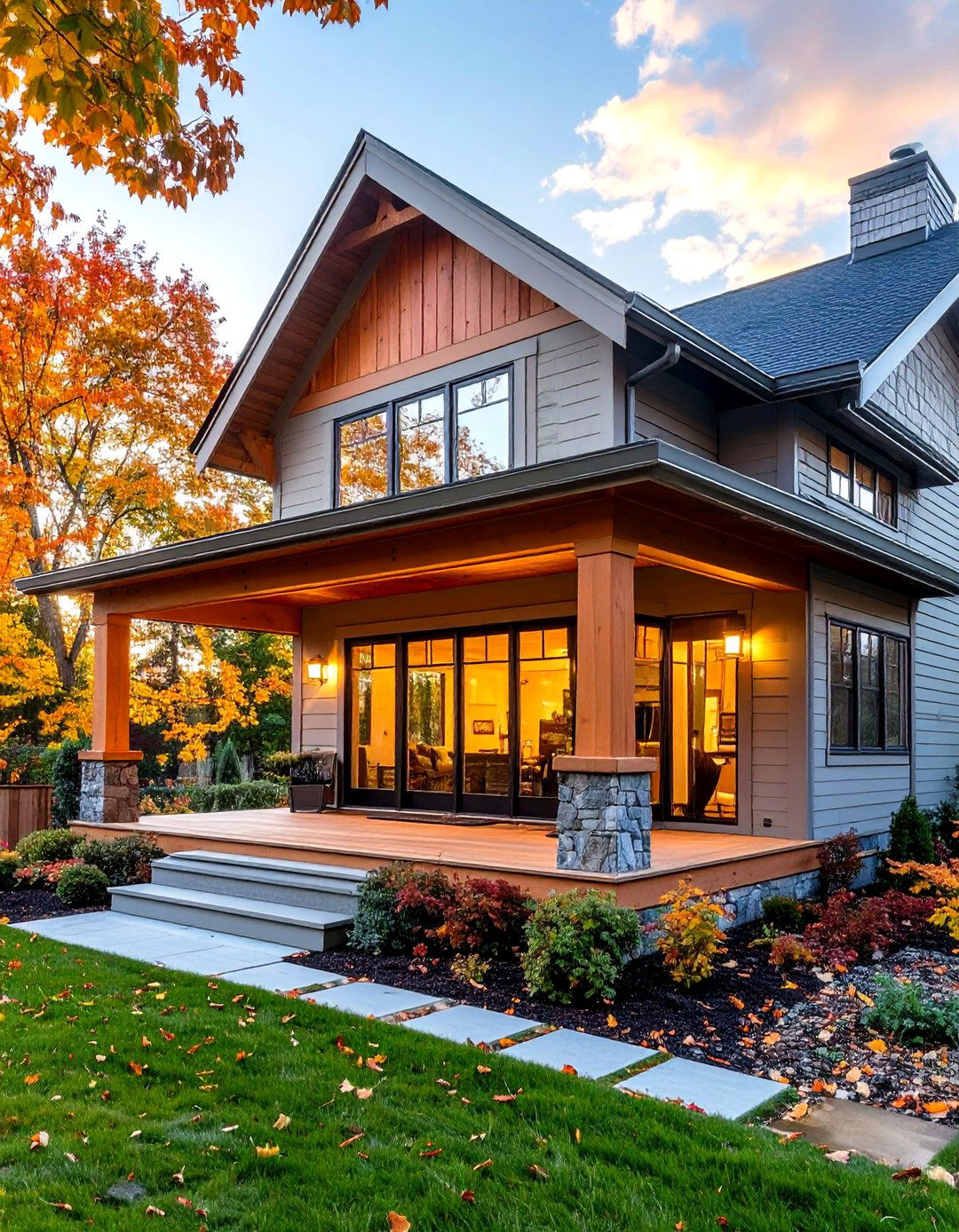
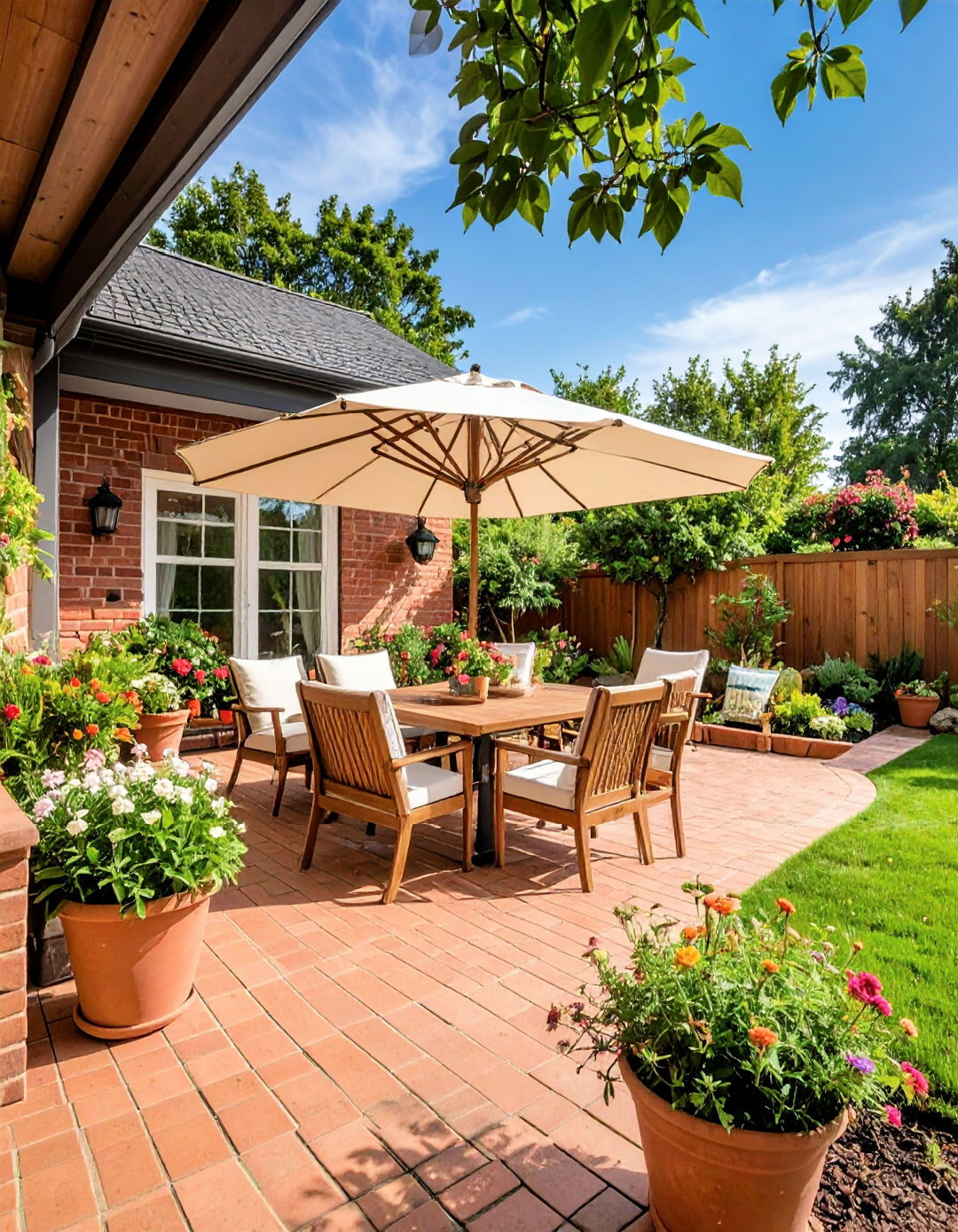
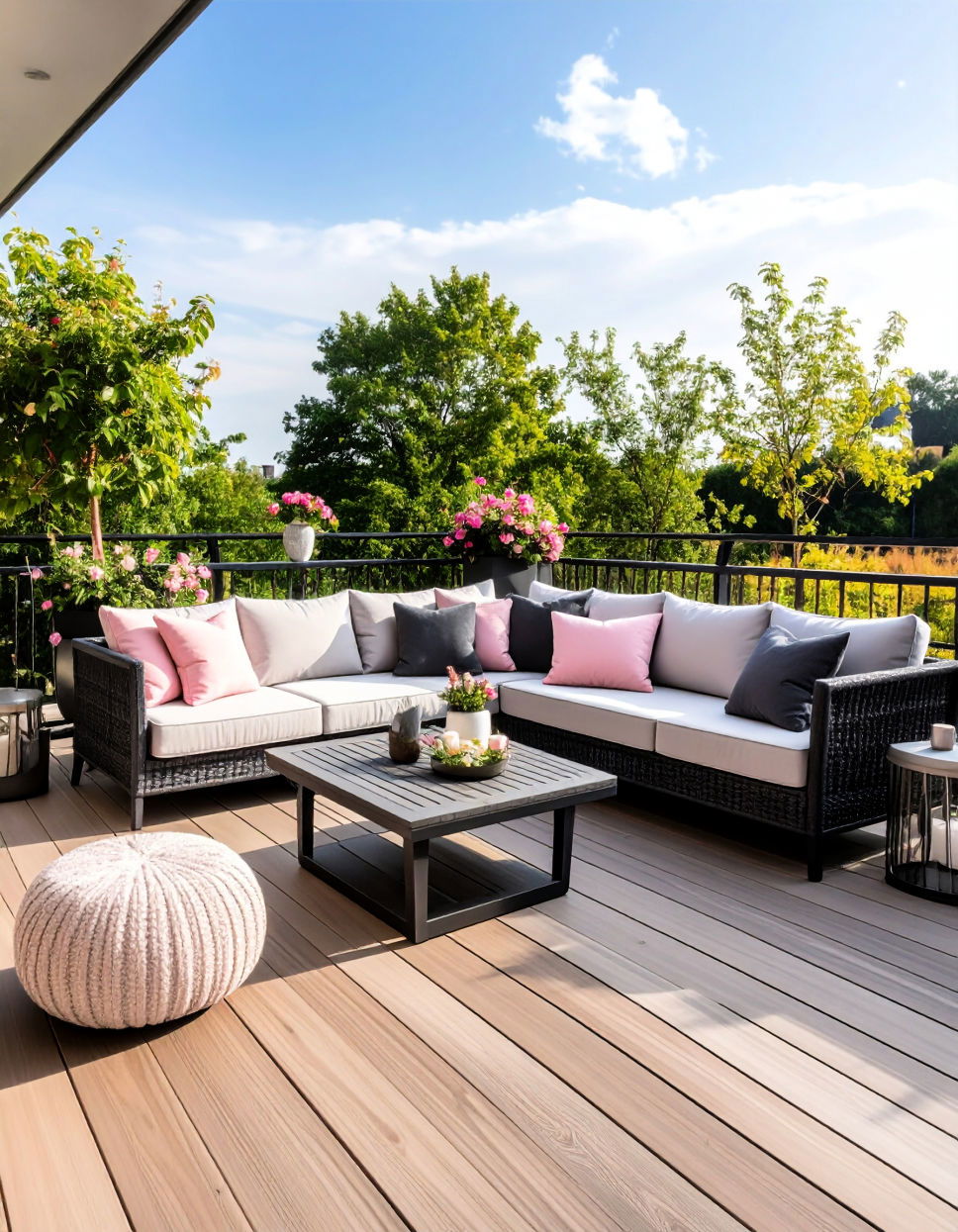
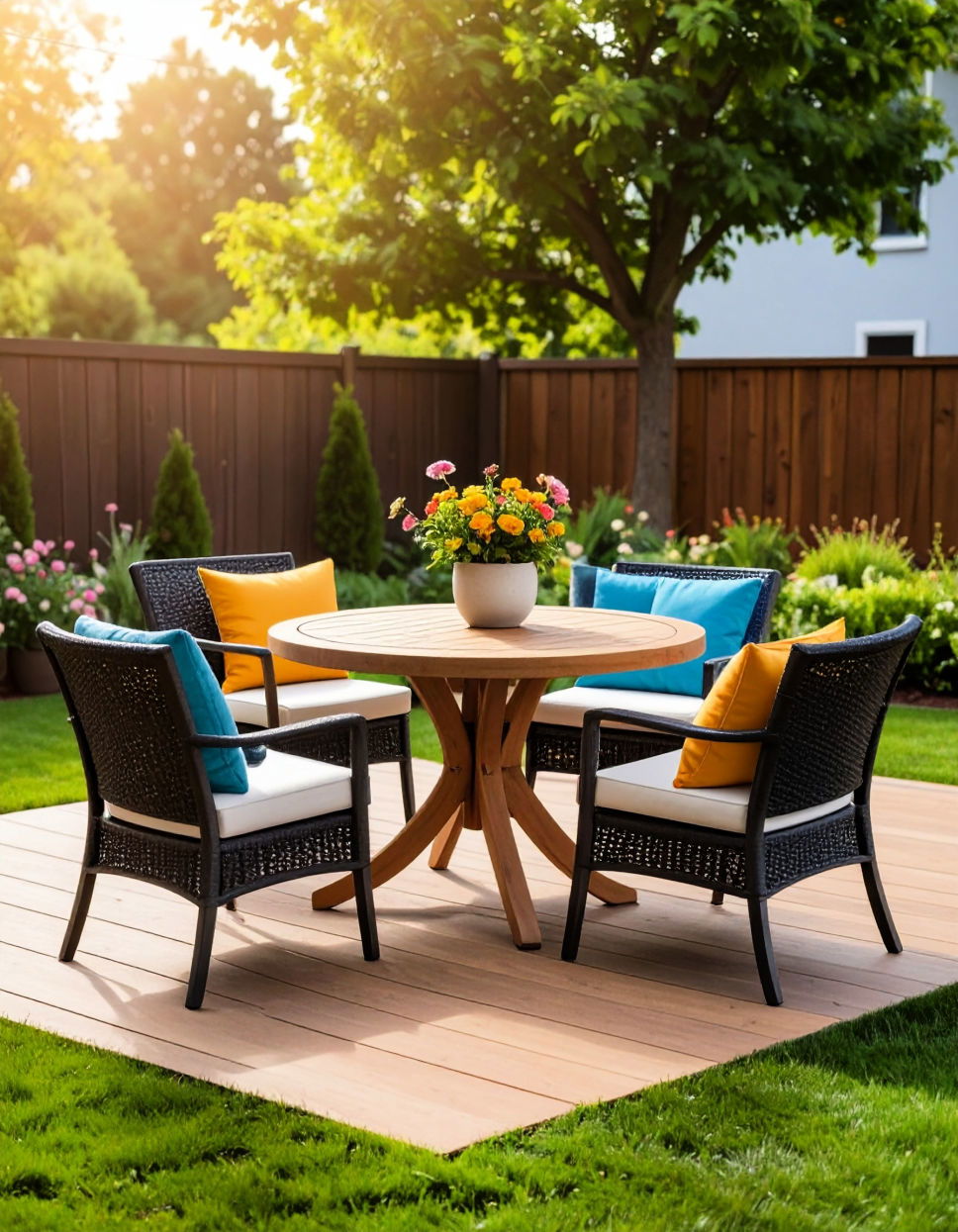
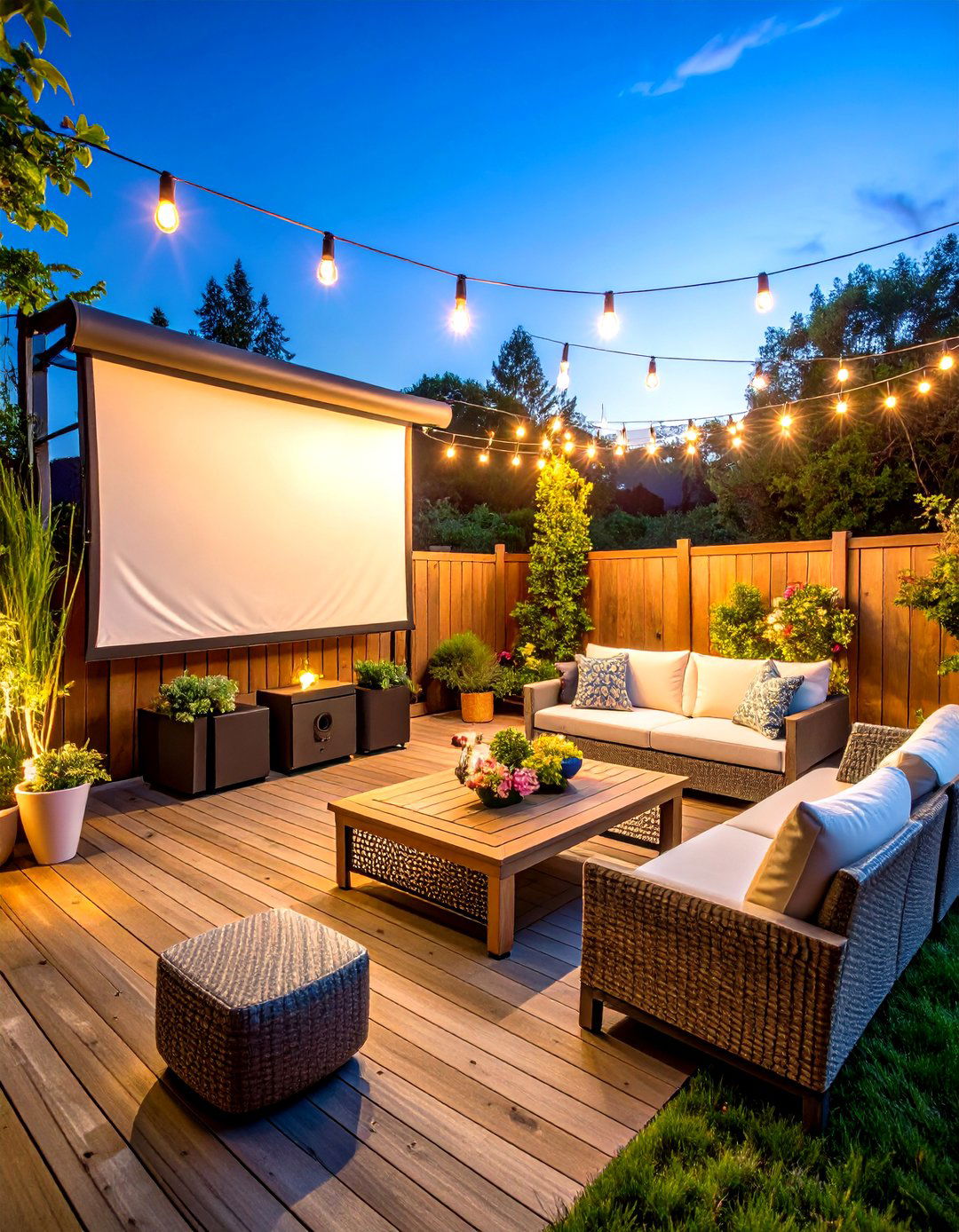
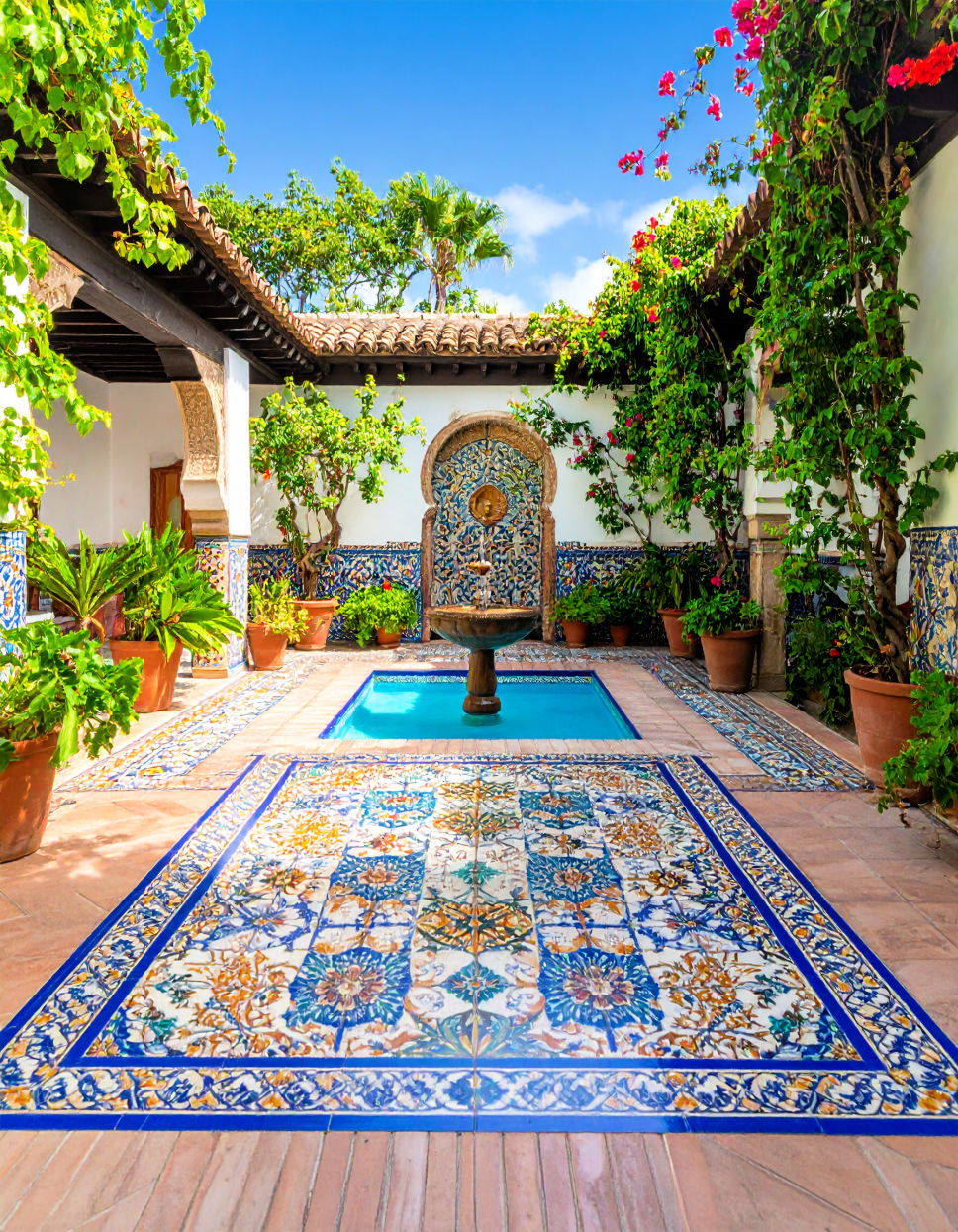
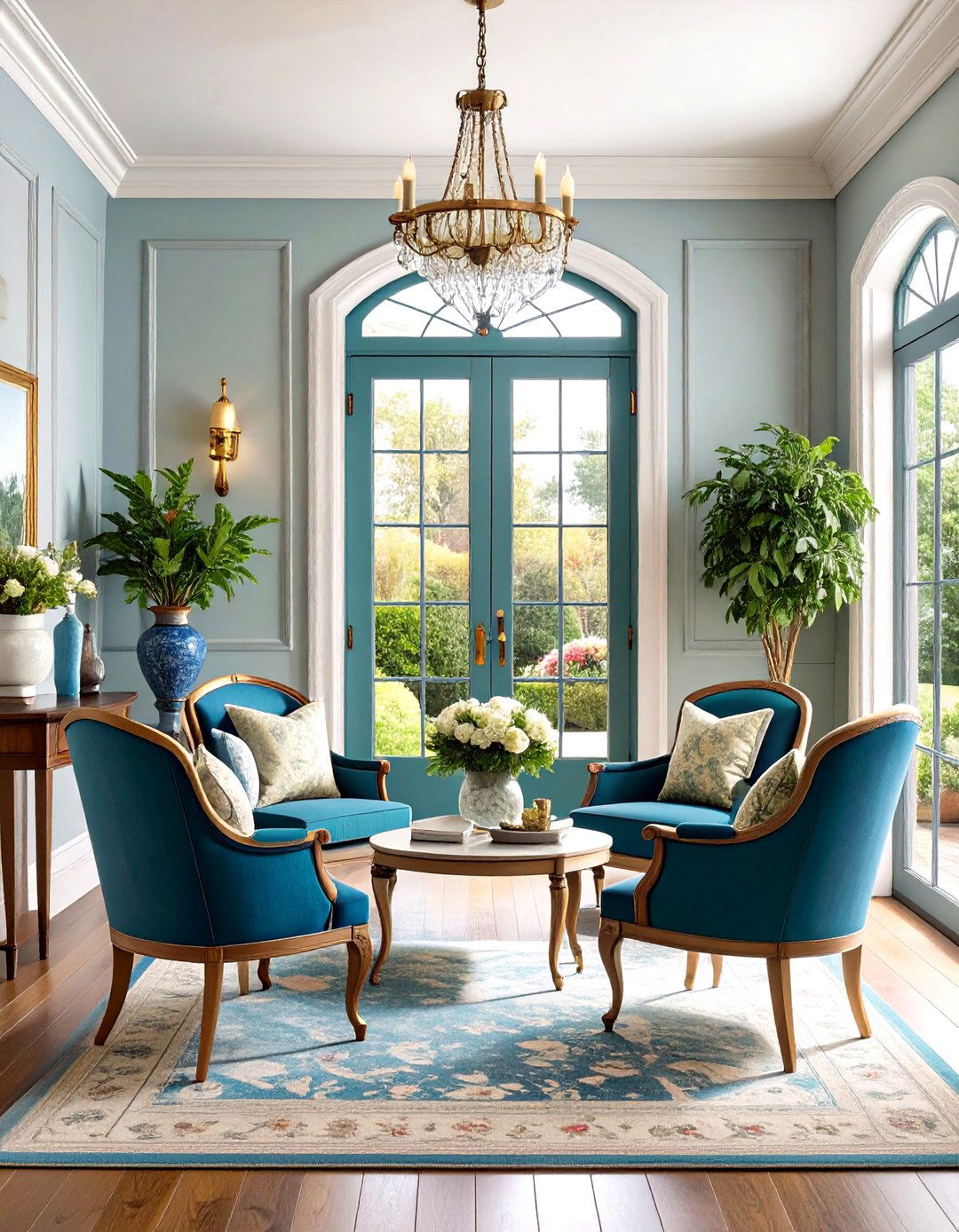
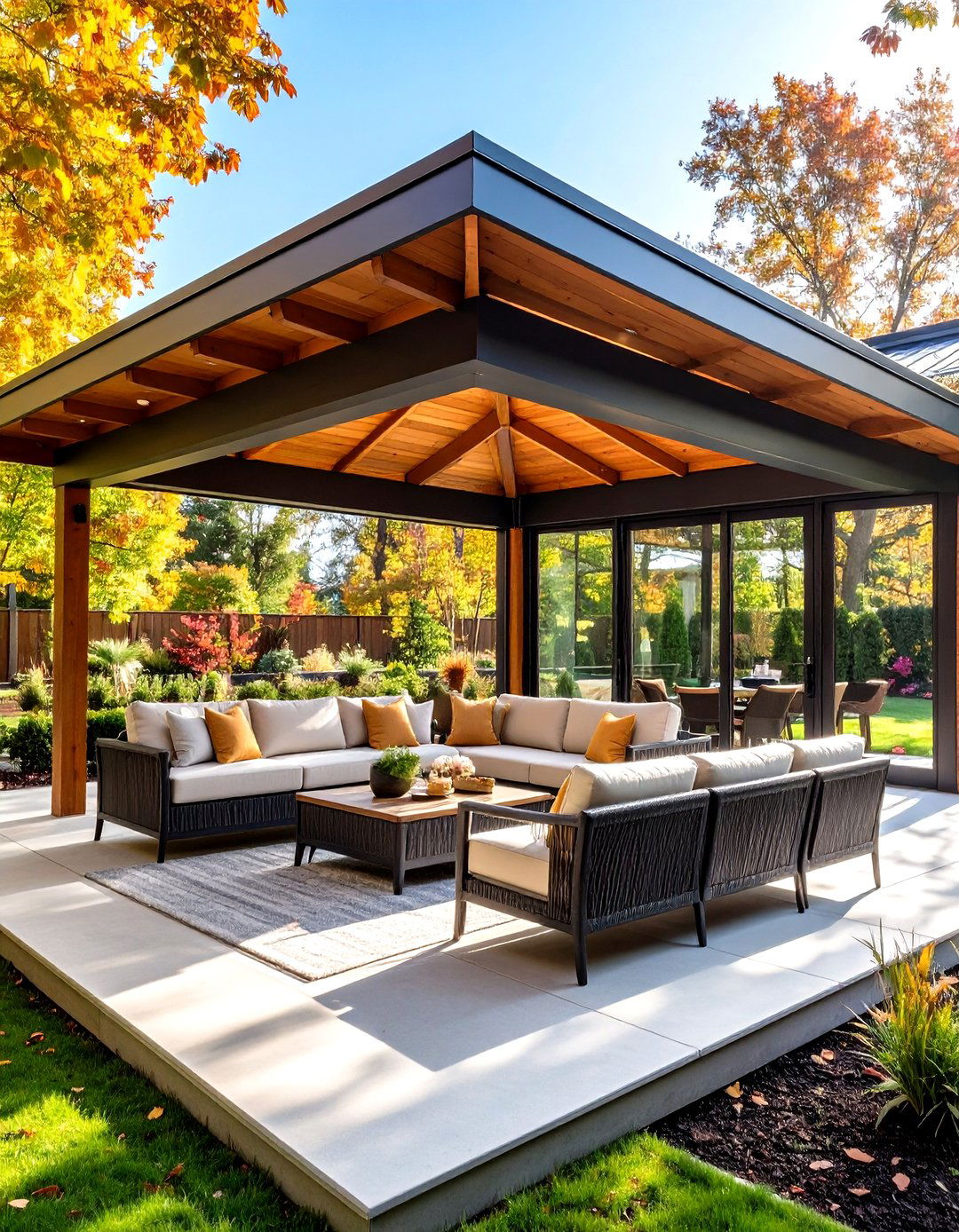

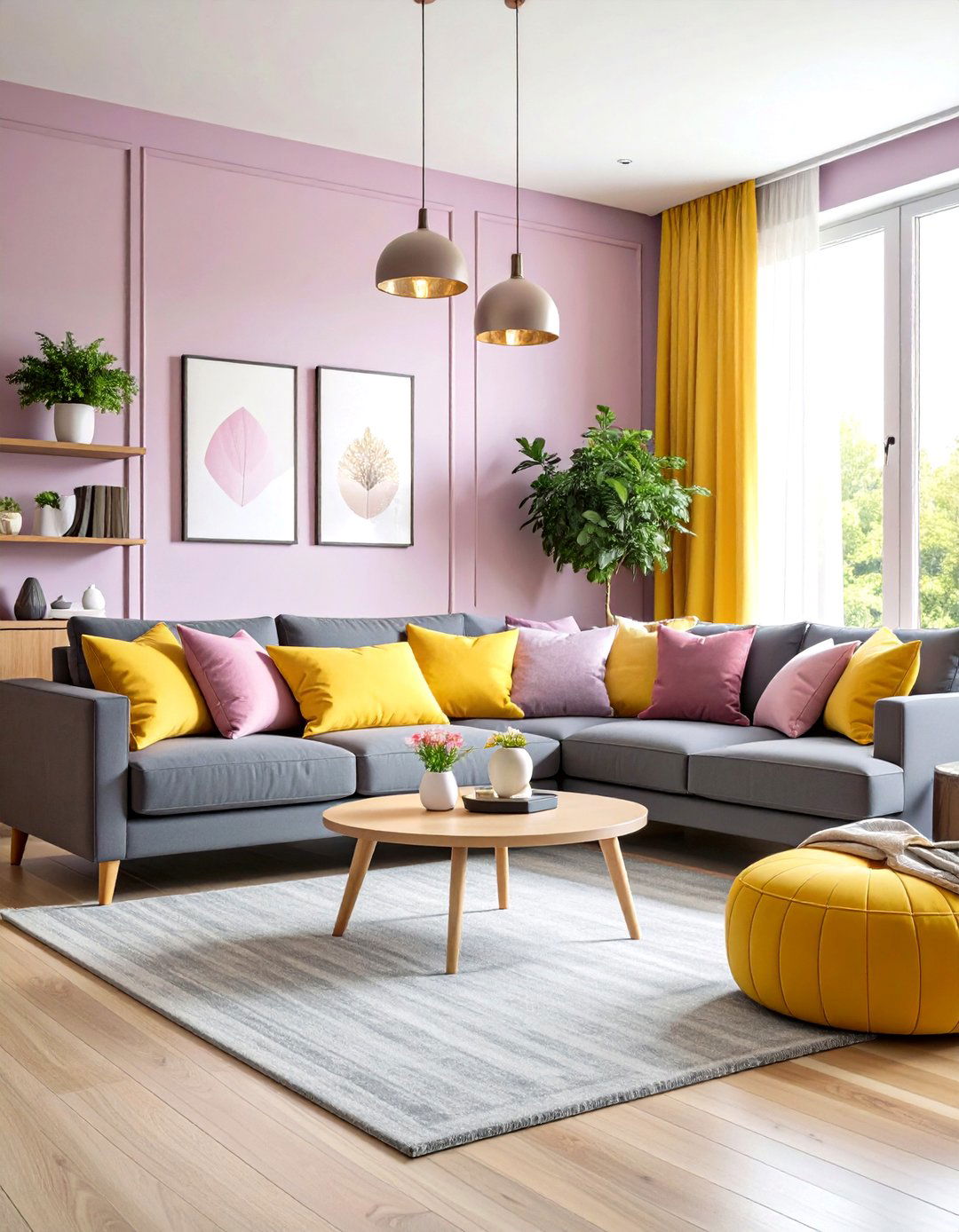
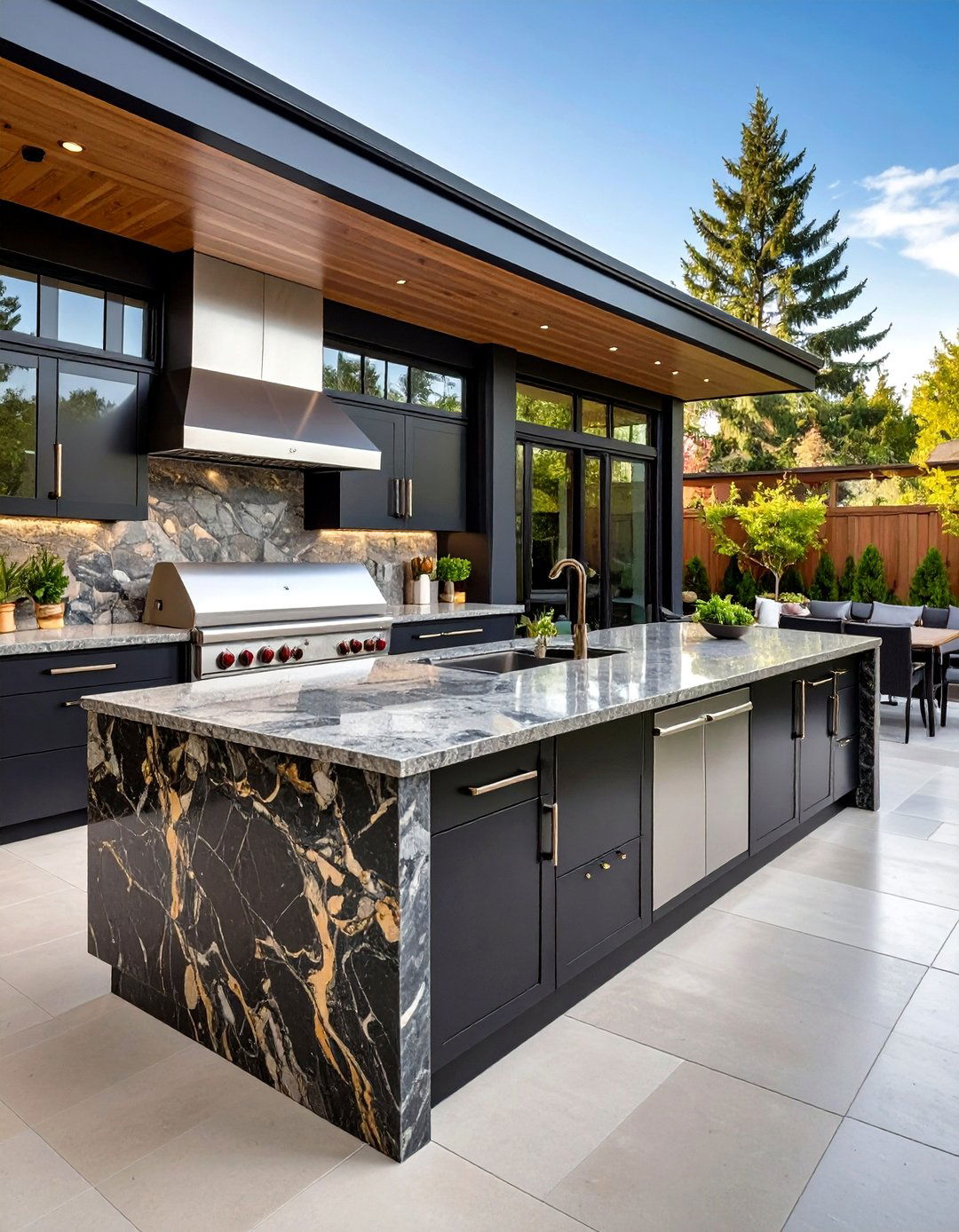
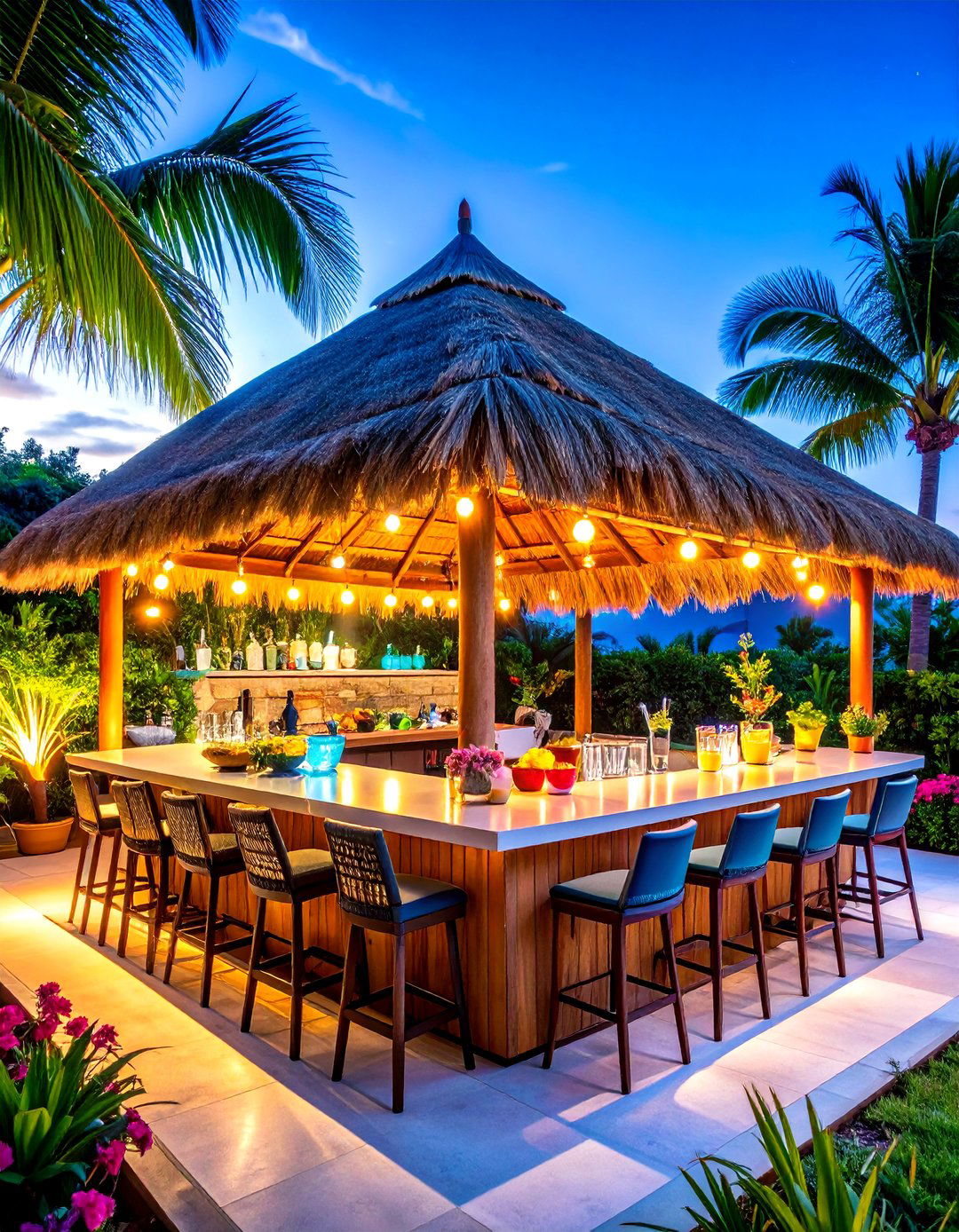
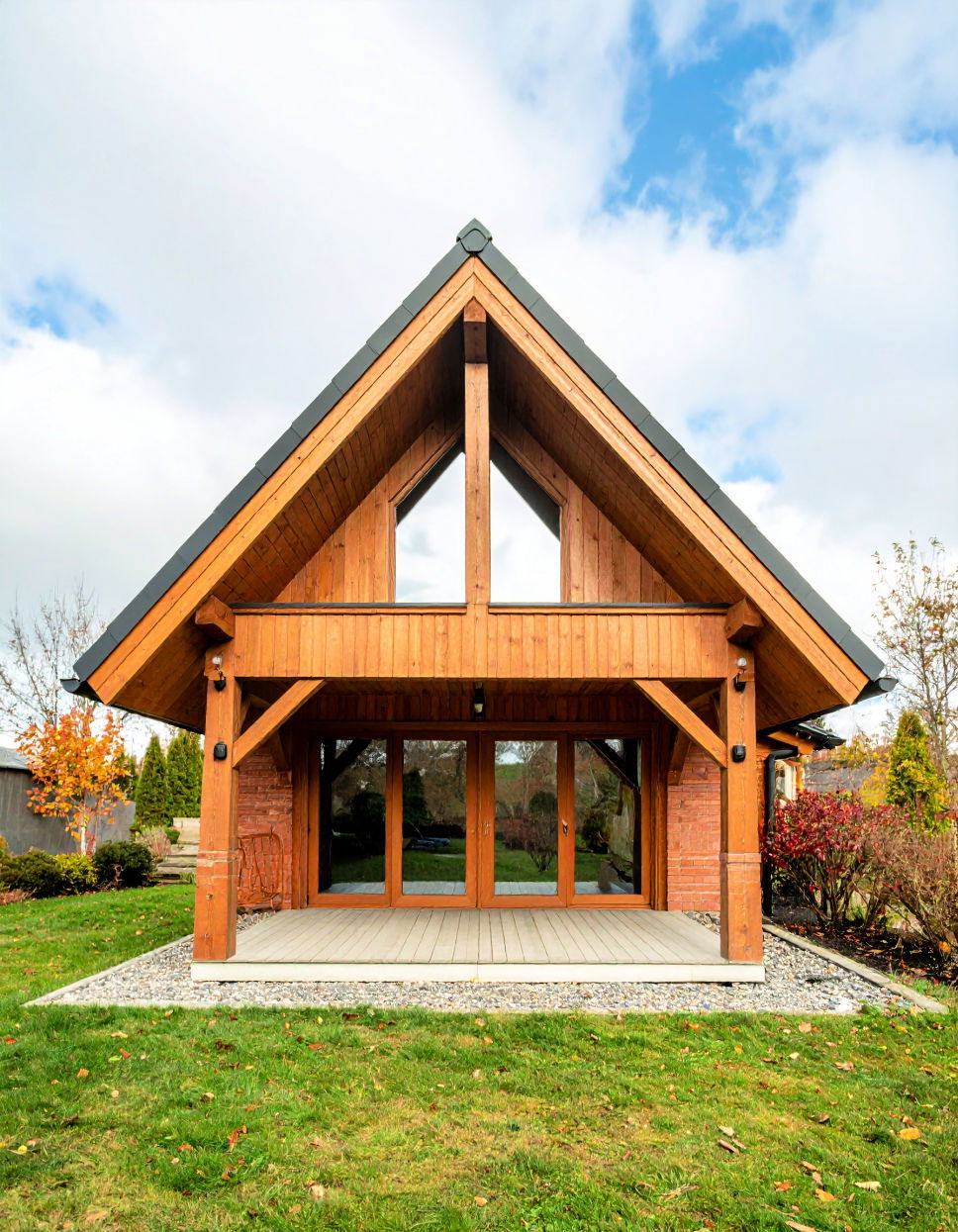
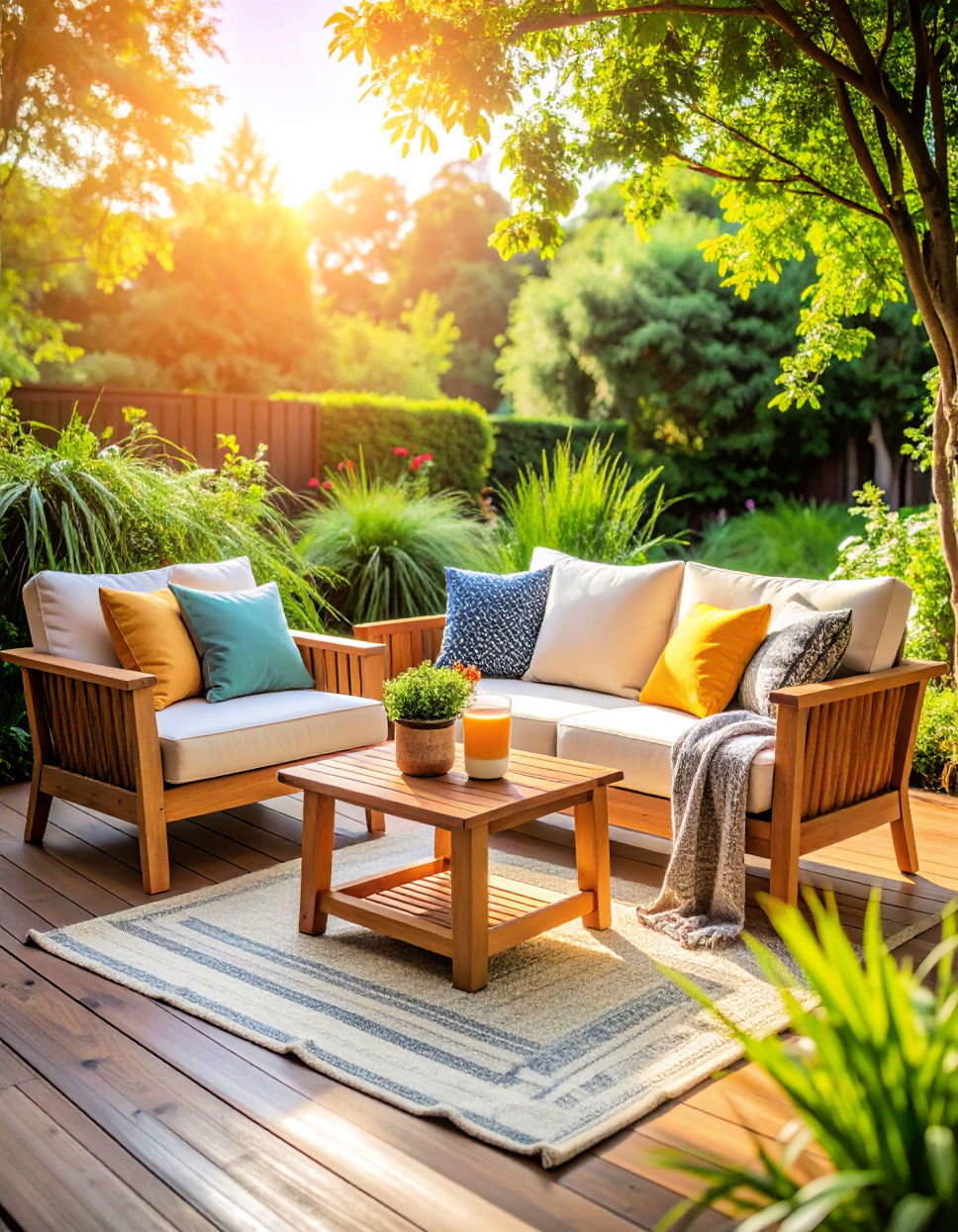
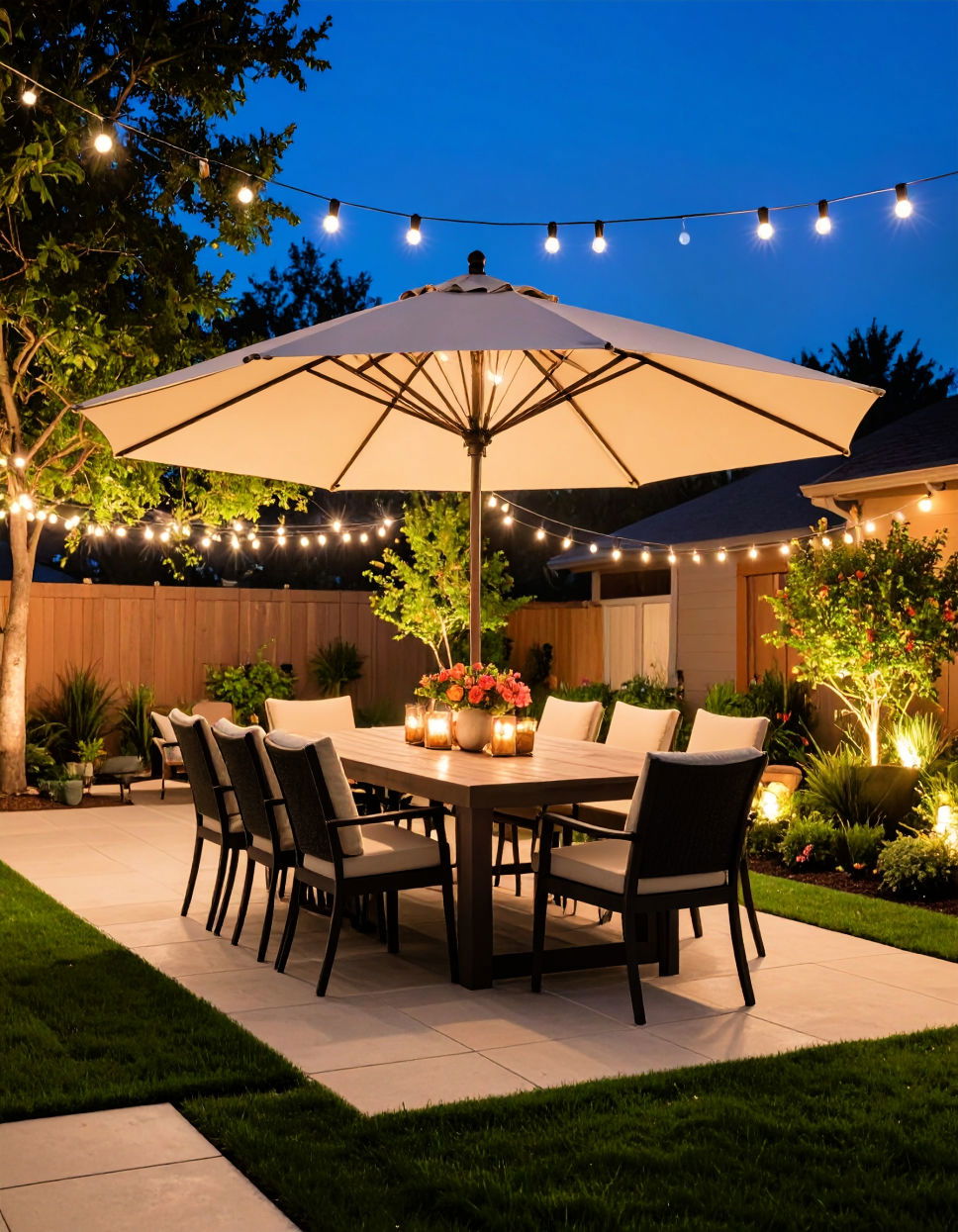
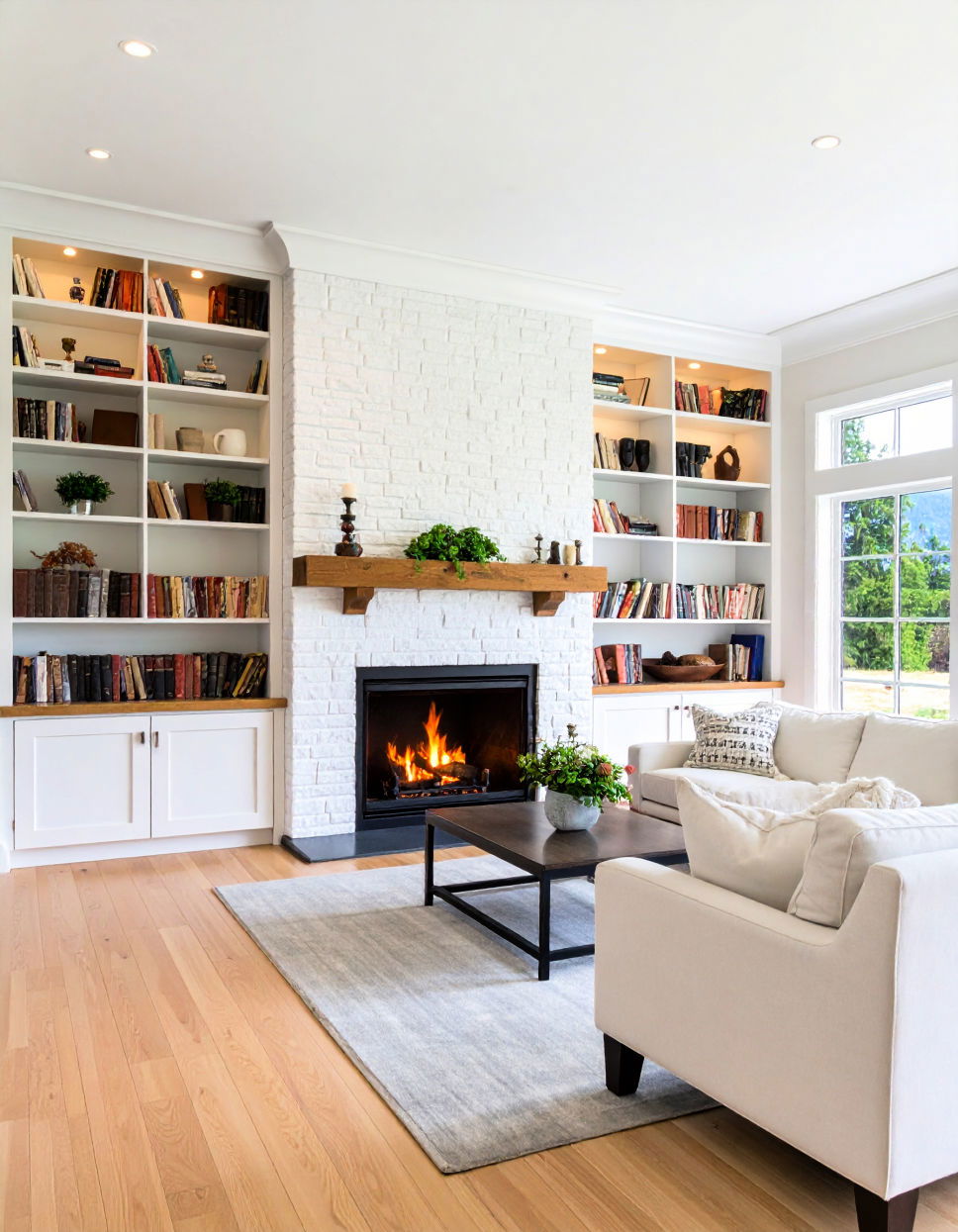
Leave a Reply